It’s been a touch over four months since I first published the Stages Power Meter In-Depth Review. It was interesting to me in that a lot of people took very different things away from the review.
As a result of that review, Stages made a number of updates to their power meter firmware since then, including addressing specific items that were raised as concerns during the review. Based on that, I continued to ride with it. Every single ride for months. They provided iterations of new firmware updates, and I updated. Rinse and repeat.
Except, it wasn’t just riding with a single power meter. No, it was riding with 3-4 power meters concurrently. And 4-7 head units concurrently. One of the Slowtwitch editors recently noted something along the lines of ‘The fun factor of these rides were approximately zero’. Which is pretty true here as well. Aside from being a cold and rainy winter, there’s far more complexity in ensuring that every setting and start/stop time is exactly the same when you have so many head units and power meters running concurrently.
I’m reasonably confident that outside of Stages themselves, I probably have the largest and most complete data set of a single rider against as many additional power meters as one can technically attach to their bike. I do note ‘single rider’ because again – this is just me. It’s not as though they gave me 10 crank arms to test with and assign to random people. And quite frankly, I wouldn’t want that. That’d be a nightmare. And it’d be useless without the same painstakingly strict test protocols that I go through. Protocols that no sane person wants to deal with every.single.ride.
If you’re just finding this page without going to the original review, I encourage you to go to the original review to get a grasp on how the Stages Power Meter works, unboxing shots, and all the usual background information.
A look at the testing methodology:
If there’s anything I’ve learned (or can note to others), it’s just how difficult it is to accurately test power meters. Going out for a ride with two power meters isn’t a test of a power meter. It doesn’t tell you who is right or wrong. It just gives you two power plots. It can tell you and show you potential abnormalities, but not absolutes. It cannot be used to perform a full comparison review. You must have a 3rd unit to provide perspective. Speaking of that 2nd (or 3rd) unit, making the assumption that the Quarq/PowerTap/SRM/Power2Max is always correct is fundamentally flawed. How do you know? What calibration procedures have you done? And have you done them correctly? Even then, as I’ll show you below, it’s easy to make some of those units go askew in certain conditions. Knowing those conditions is critical.
The same goes for data collection. Each head unit records data differently, and finding ones that record data the same way is critical to testing. One of the tools I got added to my bag for these tests was the WASP unit. The WASP allows me to simultaneously collect power meter data from an unlimited number of ANT+ power meters (or other ANT+ accessories) concurrently.
Further, not only does it collect that data concurrently with a timecode, it also collects at a higher rate than a typical Garmin (or other head unit). Normally Garmins will pick one of the 1-8 broadcasts per second, and record that. Whereas the WASP will collect all samples per second and record the average of those.
You can see a screenshot of what this data looks like below:
Which isn’t to say I just used the WASP. Nope, almost all of my rides has between 4 and 7 head units recording concurrently.
This means that every single time I was following a set procedure on how to collect the data, which included:
1) Validation that each power meter was paired to the correctly labeled head unit (validation of ANT+ ID against known PM ANT+ ID)
2) Validation that each power meter did a manual calibration prior to the start of the ride
3) Validation that each head unit was recording at the same settings (1s recording, cadence and power zeros included)
4) Validation that all were using an external speed sensor for indoor rides, and that all circumferences were set identically
5) Starting all head units at exactly the same time (creative use of fingers)
6) After the start of the ride, validate that all sensors were correctly transmitting
7) At approximately 10-15 minutes into the ride, stop by the side of the road and manually calibrate all units
The calibration procedure included stepping off the bike, but over the top tube. Then putting the cranks in the 12/6 position, and then manually calibrating each unit.
Post ride, all of the data would be collected into a single folder and then labeled by power meter and head unit.
While this sounds somewhat simple, doing all seven steps 4-7 times (for each head unit/power meter combination) really adds up.
And that’s all before I even start analyzing the data. Which usually takes hours per ride. There is no application out there today that can cleanly generate all the charts and data plots you see in this review. That’s all done with Excel, painstakingly. A simple 90 minute ride has over 20,000 power meter data points alone to correlate and analyze.
Ultimately though, I have a lot of good data to work with. Clean data, more correctly. There were certainly (many) rides where things went wrong somewhere in steps 1-7, meaning that ride got tossed out. It could be something as simple as the battery dying, or it could be that a unit got inadvertently stopped without me realizing it or that there was some form of ANT+ interference. All of it meant that the ride got tossed from using in this review.
All data shown in this review is prior to the firmware update from approximately two weeks ago. All raw data for this review is available at the end of the review for anyone to download and analyze should they wish.
Some random thoughts before we get started:
Before we dive into the analysis, I want to cover some ground on a few topics briefly. Mostly as a way to ‘catch-up’ folks on various areas of note relevant to this review.
On my pedaling: It’s been funny how some have attempted to identify issues with my riding style during the original review, somehow impacting the tests. Some said I was left-leg heavy (thus impacting things). Some said I was right-leg heavy (more issues). Some said I stopped and started my bicycle the wrong way. Or pedaled the wrong way.
I say this in the nicest possible way: None of that matters. Really, it doesn’t. It’s trying to find fault where fault doesn’t lie. Either the product works with a random cyclist (me), or it doesn’t. Whether it works with a different random cyclist (you), is certainly debatable. I lack the concentration to somehow pedal a certain way for hours on end. Perhaps a professional tour rider does, but for me, I’m just gonna keep on pedaling the same way I have since I had training wheels on. Which based on what I can tell – is probably the same way you pedal. And at the end of the day, it’s all about whether the unit works across the board – yes or no.
On studies of how people peddle: There’s certainly been some interesting studies on how people peddle. I’ve looked at a LOT of studies on this topic. But there’s some key issues that folks like to talk around. First is that most of these studies are 20-30 years old. That doesn’t mean they aren’t useful. But that does call into question the accuracy of the data collection methods on left/right power meters. Keep in mind that it’s last year that we finally got a left/right power meter that works outdoors. Most of the studies are indoor-based, and it’s well proven that power meters act differently indoors than outdoors. Even the more recent ones are very small in their data sets – literally in some cases just a few rides.
Again, I’m not saying to ignore those studies. But I am saying to take them with a boulder-sized grain of salt.
On ‘second/update’ reviews: This is the only time I’ve ever completed a ‘second review’ on a product. Historically when a company prematurely releases a product, they have to live with the reviews published to the internet based on premature release. Ask Motorola how that worked out for the Motoactv. Or Garmin. I often go back and make minor changes or updates based on new features or changed functionality, but not wholesale new reviews. Power meter reviews are actually the most complex reviews I have to publish. They are incredibly tough to get ‘right’, and a lot of data collection and analysis goes into it. Thus, when I publish a second review for a product, that means at least another 2-3 products in The Queue get pushed out further and delayed. That’s the only way it works in a time-constrained system.
On data collection: One aspect that some have wondered whether it impacted the end results was the Edge 510/810 in some of the original tests, which had an issue that resulted in some power drops. Out of curiosity, I looked more closely at this and went and actually ‘nulled’ those drops (they were very predictable timeline-wise in that particular firmware version). However, that still didn’t resolve the core issues brought up in the review around variability. Nulling out the Edge issues only moved things about one half of one percent in most cases (on average it occurred once every 2 minutes). So while it did have an impact, it was sorta like dumping a glass of water into a flooded house.
On differences between power meters: I see a lot of talk about the holy grail of never switching between power meters because it means your data will be offset. That’s true. There’s a fundamental difference in power measurement location between using a crank based power meter and one on a trainer or wheel. No doubt. But I’d argue that in the scope of power meter technology today – it doesn’t matter. I’d argue that most folks don’t calibrate, and even those that do, wouldn’t necessarily know when the data is right or wrong or when a power mis-calibration has occurred. ‘In power meter we trust’. Can you, out on the open road, tell the difference between 5w higher or lower for 4 seconds? How about 10w on an hour long climb? And if you can (which, you might), can you tell me where and when that variation started to occur? And can you do it over the course of multiple years and ensure that ever single ride was calibrated perfectly? And, as you’ll see below – that’s the real question, and not just for the Stages, but for any power meter.
The Tests and Results: Indoor Rides
Let’s dig into a handful of rides. These are rides where all data recording aspects went as planned, thus enabling us to really dig into the data. As with the previous review, any obvious ANT+ transmission errors (i.e. interference) were nulled as to not impact any specific power meter. This is not the same as spikes or drops however, and in the event of those, they were and are specifically called out. ANT+ interference errors are easily seen because they tend to affect all data channels (i.e. heart rate included).
These two rides were done indoors on trainers that have the capacity to both generate resistance as well as measure power. That’s key because it gives us even more data points to work with in some cases (what the resistance ‘should’ be).
90 Minute Indoor Trainer Ride:
This indoor ride was completed on the CompuTrainer (CT), with three additional power meters: The PowerTap, Stages, and Quarq. Per the calibration procedure, each was manually calibrated (or roll down in case of CT) prior to the start of the ride. Then again at the 20 minute marker, all were manually calibrated again. The workout itself was as follows:
A) 10-Minute warm-up
B) Some high-cadence work for 10 minutes
C) (Then Calibration)
D) Building for 15 minutes
E) Then 3 minutes easy
F) 3 x (10 minute intervals with 2 minutes easy in between)
G) 4 x short 30s sprints
H) 5 minute cooldown
With that in mind, let’s look at the overall stacked graph below. This means that the numbers are simply stacked on top of each other. It doesn’t mean that the Quarq is measuring higher. I did this just because for this graph it’s easier to see.
As you can see, the numbers ‘tracked’ quite closely across all units. But as I discussed in the first review, creating a comparative graph isn’t as useful because it tends to ‘skip’ over details, such as the exact variability between units.
Next let’s look at the difference between the power meters in watts. This is somewhat complex to display on a single chart for all units at once, so it’s in multiple charts instead. The titles specify which power meters are being compared. The vertical axis shows wattage, and the vast majority of the ride my average wattage is between 230 and 280w (to give context on percentage).
Note that all charts are sized with a min/max vertical axis of –80w and +80w.
Next is against the CompuTrainer itself. Note that the CompuTrainer has a specified warm-up period of generally between 10 and 20 minutes. Thus why you see the divergence there for those first 20 minutes. It’s not the Stages causing that divergence. Once I complete the secondary calibration on the CompuTrainer, it snaps right into place.
For completeness, here’s the Quarq vs PowerTap numbers. As you can see, any two power meters will differ.
So what do you see above? Well, in all the charts the vast majority of the time you see the difference being less than 20w. You’ll see some spiking towards the end, but that’s in the 500w+ intervals that I was doing, and thus the difference is likely due to lag more than anything else. But remember, we’re not looking at any difference itself as being bad, but rather the variation of the difference. Each power meter measures power in difference places. As a result, the PowerTap will generally show less wattage than the Quarq, for example. So we’re looking to have more of a steady line – wherever that may be (high or low).
In looking closely, you see that in general the variation was lowest when comparing the PowerTap to the Quarq, and the Stages to the CompuTrainer.
But if we step back and look at this graph from the standpoint of a coach, focusing in particular on the three main interval sets – it’s clear that you can easily discern what the athlete is doing, and their output level.
If I look at just the first 10-minute interval for example, here’s the averages:
Quarq: 287w
Stages 278w
PowerTap: 288w
CompuTrainer: 270w
And the second interval:
Quarq: 282w
Stages 274w
PowerTap: 282w
CompuTrainer: 266w
And the third interval:
Quarq: 281w
Stages 269w
PowerTap: 280w
CompuTrainer: 266w
As you can see, any coach could easily use any of those numbers to give perspective feedback to an athlete on how this ride went. In my case, all three intervals were set to essentially the same values at the start, with a slight fade of 10w over the course of the interval (where I backed off the wattage to keep within a HR zone).
What about one of those sprints at the end? Well, here’s what one of those look like (averages including the build/fade):
Quarq: 487w
Stages 458w
PowerTap: 457w
CompuTrainer: 441w
As you can see, there’s a bit more variation, but not much. But which one is right? That’s the tough part. How do you quantify exactly which one is correct? The Stages and PowerTap were only 1w apart.
Now let’s look at total ride averages. As noted once before – that’s the absolute easiest bar to meet. I can put up a $99 PowerCal strap and get pretty close to spot-on averages (within a couple watts). But nonetheless, here they are:
We see that the Quarq is the highest, which is logical – it’s measuring power closest to my legs. And the PowerTap and CompuTrainer are lowest, also logical given their place later in the equation (due to drivetrain loss). We see the stages sits below the Quarq, and in this case slightly below the PowerTap as well. For reference, the difference between the Quarq and the Stages is 4%, whereas the Stages and the PowerTap is 1.5%. And the Stages and the CompuTrainer is less than 1%.
80 Minute Indoor Trainer Ride:
Ok, next up, another indoor trainer ride. The structure was fairly similar as the first one:
A) 10-Minute warm-up
B) (Then Calibration)
C) Some high-cadence work for 10 minutes
D) Building for 15 minutes
E) Then 3 minutes easy
F) 3 x (8 minute intervals with 2 minutes easy in between)
G) 4 x short 30s sprints
H) 5 minute cooldown
With that in mind, let’s look at the overall stacked graph below. Again remember that the stacked graph simply shows all of them on top of each other, thus there will naturally be gaps. It’s used to easily see the differences.
So let’s dive into those differences. Like above, I’ve done ‘difference’ charts pitting the Stages up against each one. Here’s the Quarq vs Stages – difference in watts. In order to keep them inline with the earlier charts, the scale was kept at +/-80w. In the below example it bumped just a touch bit higher in those intervals, at 94w.
So before we move onto the others, you’ll see that in general it’s within 20w the entire time. Again remember that delays in transmission and recording can cause some of the variability. The spikes you see at the ending are due to the quick sprints I was doing. Because of the fact that these were only 20 second sprints at a high intensity (500w+), they can easily produce differences like you see due to that delay.
Here’s it plotted against the KICKR (via ANT+):
And then here’s the Quarq and KICKR plotted. Remember all these graphs are smoothed at 10s (the underlying data is).
You’re probably looking at the above and seeing a lot of variability with the KICKR. And that’s true. Remember that the KICKR measures power based on changes to speed. It’s doing it differently than based on pure strain gauges. What you see above is that during the portions of the workout where I’m shifting speed/cadence/power significantly (the high cadence portions & the sprints), we see variability due to data lag. But in the main sets we see the values very close (less than 10 watts).
Here’s the average/max/NP for the ride:
As we can see, the average and NP numbers were very close. The max watts on the KICKR was a bit lower, but that makes sense because it wouldn’t likely have felt a 1s spike during a sprint as high as the Quarq or Stages. And at 753w, the difference between the Quarq and Stages is exactly 2.5%. Well within the published margin of error for either unit.
The Tests and Results: Outdoor Rides
Now we get to the fun stuff – outdoors! While I have lots of rides in Paris, I’m actually using two particular rides below for a reason. First is that I have the WASP data, which makes it easier and cleaner to visualize. But second is that unlike my Paris rides which are full of stops due to traffic/etc, these are more or less nonstop. Thus making it easier to both visualize as well as spot any differences. With stop/starts of traffic, it can become very difficult to separate out drops/spikes from simple stopping and starting rapidly.
Las Vegas Desert Ride:
This was a ride I did while in Las Vegas in mid-April. First up is the stacked graph. Now, this can be really busy looking – because it’s far more variable outside than inside. The route itself is more or less never-ending rollers. So I’m constantly shifting power according to terrain. Note, you can click on any of these to expand a bit.
So, let’s smooth things out a bit with a 10-second average:
Again, remember these are stacked, and thus not the actual difference between the units – but rather the relative differences in how they track.
Now let’s look at the differences between each one. As with before, these are all smoothed at 10s.
Now for the Stages vs PowerTap:
And finally, Quarq vs PowerTap:
Now, the challenge here continues to be the variance in outdoor data when comparing rides side by side. So I applied a 1-minute (60-second) smoothing to it:
So within this, we can clearly see how they tracked. In most cases they aligned quite well. We see that in general the Quarq tends to ‘rise’ above the rest from a max standpoint, either because it’s measuring further up the drivetrain (likely), or because it catches some of the short bursts a bit better. We see that the Stages pretty much just slides in between the Quarq and the PowerTap and tracks well against both. The only cases where we see differentiation seem to come from the PowerTap on some of the descents – reporting a bit lower power than the rest.
Finally, here’s the totals across all three units:
As you can see, all within the same ballpark. But again, getting ride total averages in the same ballpark is pretty easy in the grand scheme of power meters. What I do appreciate though is that you can start to see a pattern between the Stages, Quarq and PowerTap being developed. We see that the Quarq tends to be the highest numbers (Avg/NP), with the Stages slightly below it, and then the PowerTap beyond that. This likely means that my left leg is just a tiny bit weaker than my right leg, as the Stages is only measuring left-leg. The difference between the PowerTap and Quarq makes sense and is inline with expectations, likely due to drivetrain loss.
Mountain Ride:
This ride was done shortly after the Vegas ride. But now I’d travelled to Los Angeles and this ride was starting right at the base of the nearby Angeles National Forest (basically a mountain range), and then heading up into it. The weather down low and on the climb was miserable (pouring rain, cold), but up top it was beautiful.
I really wanted to include this ride because it shows just how massive the impacts of weather and calibration can be on data. Data that unless you had multiple power meters on your bike, you’d likely not realize there was an error.
First up, let’s look at the stacked graph. Quite frankly, this is a mess to try and decipher– so let’s just move on.
So let’s go ahead and apply a 1-minute smoothing to it. This creates a rolling average of the last 60-seconds of data.
Wow, lots of interesting stuff in there. But before we do that, let me give you the elevation profile of the ride that goes along with this. This is set to display as ‘time’, because that’s the same as above (seconds). I specifically moved the elevation points to the right side of the graph, so that it basically aligns visually to what you see above. Where the numbers are on the right side the mountain just goes back down (I start/end in the same place).
What that in mind, what you see is that there was no place for any auto-zero type technologies to kick in on either the Quarq or the PowerTap. In the case of the PowerTap, that happens while coasting. And in the Quarq, when I backpedal. Since I was literally climbing for nearly an hour straight – the only way to do so would have been to stop and get off my bike.
So I did….
First calibration: You’ll see a manual calibration I did (I marked it on the chart two screenshots above), this was about 15 minutes up the hill, where I literally pulled off to the side and manually calibrated. In doing so, all three PM’s started to align again.
But wait, that didn’t last terribly long. Look below. In yellow highlighter I’ve highlighted the two points where I did a calibration or auto-zero. As I continued to climb, you see the power meters start to drift apart. The stages stays relatively constant, but the Quarq drops off significantly – upwards of 50w+. And the PowerTap even starts to drift downwards as well, about 10-15w.
As soon as I pulled over to a random viewpoint and did an auto-zero coast, they both snapped right back in place.
Why were they drifting? Well likely because of this:
This is the temperature chart for my ride. You can see a 15*F+ shift. Keeping in mind that the Edge 800 temperature gauge (which is what this is from) has the updating speed of a turtle. It would literally take 5-10 minutes to drift from 72*F to 0*F in a freezer. So in reality, the temperature shift is likely closer to 20*F+. Here’s what it looked like outside (it’s pouring):
So how do I know that the PowerTap and Quarq were drifting, and that it wasn’t just the Stages? Well, some if it comes from knowing yourself. In my case my heart rate stayed pretty constant across that timespan. And while heart rate isn’t always a great indicator of power, it does help provide context. I certainly wouldn’t have lost 50-70w in wattage over the course of just an hour climb.
Next is that the Stages contains temperature compensation, whereas the Quarq doesn’t. Also, once the auto-zero was done on the Quarq and PowerTap, everything instantly aligned back to where it should have been. Keep in mind there is no manually triggered auto-zero on the Stages (happens continuously), so there was nothing changed there at that time.
We also see some of this same drifting in reverse (plus a bit of other funkiness) happening to the Quarq on the descents on the way back down.
So, as we look at the ride totals, you’re going to see data different than ‘the norm’. Because the Quarq and PowerTap were measuring low during the climb, these numbers will be lower for average and normalized power. Of course, that doesn’t impact max power, which is across the entire ride. In this case, we do see a fair bit of variation in maximum power – more so than I would have expected, with them each offset about 100w (200w range in total). The challenge with max power though is that it can be one split-second packet that determines it.
So where does this leave us? Well, the Stages appears to have a fairly solid temperature compensation system built into it. The PowerTap didn’t drift significantly in comparison to the Quarq, though we certainly saw that.
Now, when we look at the middle portion of the ride where the temperature was fairly constant, we see that all three units tracked very well against each other:
Excluding the climbing/descending aspects, you could have easily used the middle data from any of those power meters. It’s only when you include the climbing/descents that you reduce the viable units to use for this particular cold and rainy day.
Cadence items of note:
I wanted to briefly cover cadence, though I thought it was pretty well covered in the original review. As you may remember, cadence within the Stages Power Meter does not depend on a cadence magnet, and thus uses an internal accelerometer. This means that there is no magnet installation required, nor any other sensor required on your bike. It just does its thing internally to the pod attached to your crank arm.
Now in the original review people seemed to continually look at the graphs and think that I said there were cadence issues with the unit. Despite clarifying this numerous times, there was still confusion there. What was said at the time was that below 60RPM we saw some impacts on torque (and thus power), but we didn’t see any issues with the cadence itself.
I tested the cadence range down to 30RPM, and up to just under 200RPM – against a known good. In this case that ‘known good’ was a traditional magnet-based cadence sensor. (Fun testing aside, it’s actually interesting to see the Stages PM drop off at precisely 30RPM. 31RPM is good, 30RPM gone.)
Taking a look at an indoor plot first, this is cadence of the Stages cadence vs Bontrager magnet cadence sensor. The graph is the 10-second running average plot, variation shown in RPM. Really do take note of the scale here though.
As you can see the average difference was between 0 and 2RPM. But again, that’s because there’s going to be some reaction time delay there from an electronics standpoint – so even just a single second delay would show up here (delay caused by transmission or recording). Said differently: They look basically spot on.
Now, here’s an outdoor ride (the Vegas one):
In this case you see more variability because of stops and starts being a factor and the data time slice needing to be just 1-2 seconds. So from a post-ride data analysis standpoint, it’s actually relatively difficult to see. To exemplify this, I went ahead and looked at a few of those areas where there’s divergence.
Now, you may be asking ‘Why don’t you just slide the entire data plot a few seconds?’. Well, when I did that it skews off the power. Meaning that while the power aligns fairly well from a timecode standpoint, the cadence does have a slight delay in it. Not enough that you’d notice it out on the ride, but enough that you notice it when you stop pedaling altogether (which is the case above).
It’s one of those things that’s much easier to see when displayed on a head unit because you can look at both units at once and see that even though one might be delayed .5 to 2 seconds, it’s showing effectively the same thing. For example, if I stop pedaling for an intersection. One unit might take 1 second to go from 90RPM to 0RPM, whereas the other might take 2 seconds. Thus on a graph it would look like there’s a ~90RPM gap, when there’s not. They’re both measuring it correctly, it’s just that there’s some internal communications and recording differences.
Again, I’m simply not seeing any issues with cadence on a road bike (nor was I seeing issues before) – either real-time indoors, outdoors, or in analysis afterwards. I don’t have a mountain bike, so I can’t in those circumstances. I do however have plenty of cobbles in Europe though – and saw no issues there.
Pacing and Wattage Stability:
One of the core areas of concern with the previous firmware was the instability of the pace. While power meter users will note that wattage on power meters fluctuates second to second, the initial Stages firmware introduced too much variability in my opinion – even while using smoothing options.
The best way to exemplify this is to simply show it. So I went out and captured some simple steady-state riding down the street. Nothing complex here, just riding on mostly flat ground. There’s no fundamental difference between riding on flat ground or a mountain from a strain gauge standpoint, it’s all just ‘effort’.
Here’s the video clip of steady-state riding. In case it’s not clear, there’s three head units, each labeled with Stages (left), Quarq (right), and PowerTap (top):

As you can see, I included instant power (top), 3-second (3s) power (middle), and 10-second (10s) power (bottom) on the display. All three ebb and flow together pretty much together.
Comparing Bluetooth Smart and ANT+ from the same unit:
After publishing this update earlier this morning a few of you asked about the Bluetooth Smart aspects, specifically focusing on comparing the ANT+ data coming from the Stages unit to the Bluetooth Smart (aka BLE) channel. As background, the Stages Power Meter is the first power meter to offer dual-broadcasting of data across both ANT+ and Bluetooth Smart, ultimately letting the user decide what devices they’re going to connect to the unit.
On the ANT+ side you have all the traditional power meter head units (i.e. Garmin, Timex, CycleOps, etc…). Whereas on the Bluetooth Smart side you have cell phone based applications, today limited to those on iPhone 4s and higher devices, as well as newer iPad/iPod devices with Bluetooth 4.0 in it (which is required for Bluetooth Smart). There is not yet compatibility on either Android or Windows Phone. I dove into the Bluetooth Smart aspects in more detail in the original review.
But I didn’t spend too much time either in the original review or in the update looking at comparative data from the Stages Power Meter when analyzing both data channels at once (ANT+ & BLE). So since I had a longish trainer ride today, it seemed like the perfect opportunity to give it a shot.
The setup for this was relatively simple: I had an Edge 800 recording the Stages ANT+ power stream, and then I had an iPhone 4s with the Wahoo Fitness App recording the Bluetooth Smart stream. I use the Wahoo Fitness app because I feel it’s the most complete app out there for data recording and analysis. It doesn’t have all the ‘community’ features of some other apps, but when it comes to data and getting data in any format on earth with reliability – it rocks that boat.
This then gave me a slew of files. Oh and for fun, I was also recording the PowerTap and Quarq concurrently – but we’ll ignore those for this test (I have included them in an updated set of raw data files however at the end of the review).
After getting all the data consolidated I started by throwing it into a 1-second chart:
Interesting, you do see some interesting variations there between the two plots – which I’ll get to in just a few moments. One track is a bit more ‘tapered’, while the other more volatile. But does it have an impact on segment averages?
Let’s first look at all the segments of my workout from today. Comparing the average wattage and cadence of each segment along the way – some as short as 2 minutes, some as long as 15 minutes. Plus the overall averages and max’s.
Again, near-perfect comparisons doesn’t tend to be exciting. But the above is pretty astounding. It’d be difficult to achieve that even with two Garmin Edge 500’s side by side recording the same power meter. I would expect that because it was a trainer ride, there’s slightly less variability than an outdoor ride – so you might get a hair bit more variation there.
So why are there itty-bitty sub-1% variations (more like sub-.5%)? Well, the Bluetooth Smart channel in this case is updating more frequently. It’s not that ANT+ can’t do that (as in fact, I do it with the WASP units all the time as shown in this review). It’s just that the Garmin doesn’t record higher than once per second. Which means it may miss some stuff. Hence why you see the higher max value on the Bluetooth Smart side – it likely had a split-second sample where I peaked higher than the Garmin even saw. This also means that you see a touch bit smoother track on the Bluetooth Smart side as it’s not just picking one semi-random packet out of the air, but rather grabbing a bunch and averaging those for the ‘1-second’ data point viewable to us.
While this one test shouldn’t be considered the end-all-be-all of accuracy, I did want to include it for those who were curious. It seems to me that the data is pretty darn solid though.
(Again note that this test above is on firmware prior to the latest Bluetooth Smart update, which may address any of the tiny little variances I saw.)
Final Thoughts:
Back in my first review of the Stages Power Meter, I concluded with the following statement.
“At present, based on me (and only me) it would be difficult for me to swap out my existing power meter with the Stages power meter. There’s just too much variance and fluctuations in power. Do I think that Stages can get there though? Yes, I do. But I think it’s going to take time, and likely more software work.” – January 2013
Based on what I’ve seen, they’ve done that work (and put in that time) – into the software. The physical unit I have has not changed since the original review. It’s the same unit I’ve had since the very beginning. They’ve just updated the software within it. And they took a lot of feedback from the original review and addressed issues of concern we had.
For me, I have no issues in using any of the power meters I’ve used in this review – including the Stages. I do in fact from time to time pick different ones, and the data is generally similar enough that there’s no discernable difference. Further, in some situations (such as nonstop climbing with shifts in temperature), the Stages simply performed better than two other units. This likely due to its automatic temperature compensation algorithms.
As for Stages being left-only and doubling the power, for me (and again, just me), I’m just not seeing any issues there. It’s possible that others have larger discrepancies, or that those discrepancies could vary. But in my case it seems pretty consistent across a wide variation of rides and riding conditions.
I think probably the biggest takeaway here is that no particular power meter is perfect. Anyone who says that there is, is sadly mistaken.
Given all that, here’s the updated Pros and Cons table:
Pros:
– Cheapest direct force power meter on market today
– Easy to install. Silly easy.
– Tons of crank compatibility options
– Accelerometer based cadence measurement works really well
– Utilizes standard CR2032 user-replaceable battery
– Automatically compensates for temperature changes
– Lightweight – 20g
Cons:
– Left leg dependent, simply doubles left leg power
– Total power could be highly impacted by your left/right distribution (but I didn’t see this)
– No method of end-user calibration validation (for advanced users)
– Doesn’t support Rotor cranks/arms as of today, or carbon crank arms
Thanks for reading! And as always, feel free to post comments or questions in the comments section below, I’ll be happy to try and answer them as quickly as possible. At the end of the day keep in mind I’m just like any other regular triathlete out there. I write these reviews because I’m inherently a curious person with a technology background (my day job), and thus I try and be as complete as I can. This isn’t my full time job. But, if I’ve missed something or if you spot something that doesn’t quite jive – just let me know and I’ll be happy to get it all sorted out. And lastly, if you felt this review was useful – I always appreciate feedback in the comments below. Thanks!
Finally, I’ve written up a ton of helpful guides around using most of the major fitness devices, which you may find useful in getting started with the devices. These guides are all listed in the ‘How-to’ section. Enjoy!
Note: Raw data files used in this review are available here. Notes are contained within each folder.
FOUND THIS POST USEFUL? SUPPORT THE SITE!
Hopefully, you found this post useful. The website is really a labor of love, so please consider becoming a DC RAINMAKER Supporter. This gets you an ad-free experience, and access to our (mostly) bi-monthly behind-the-scenes video series of “Shed Talkin’”.
Support DCRainMaker - Shop on Amazon
Otherwise, perhaps consider using the below link if shopping on Amazon. As an Amazon Associate, I earn from qualifying purchases. It doesn’t cost you anything extra, but your purchases help support this website a lot. It could simply be buying toilet paper, or this pizza oven we use and love.

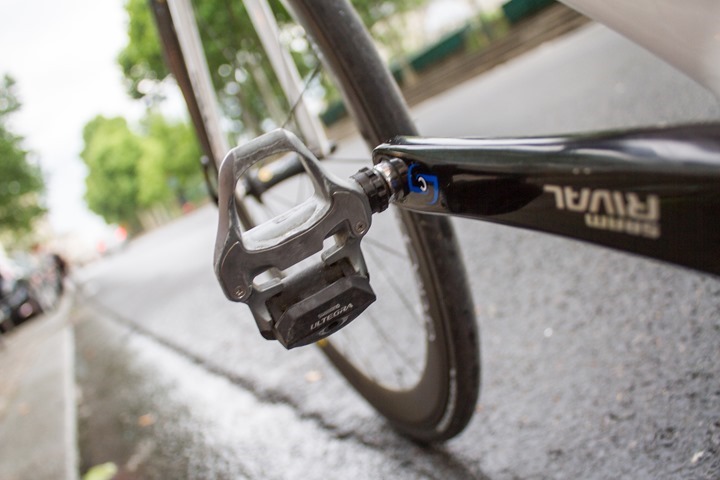

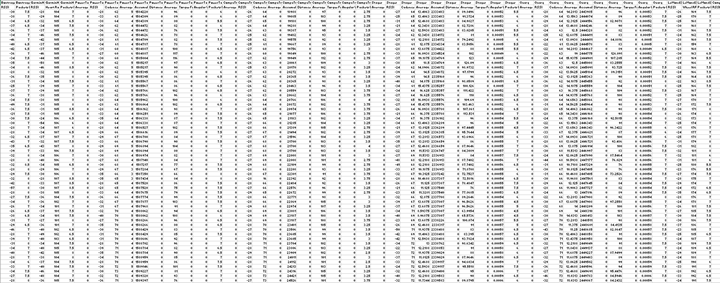
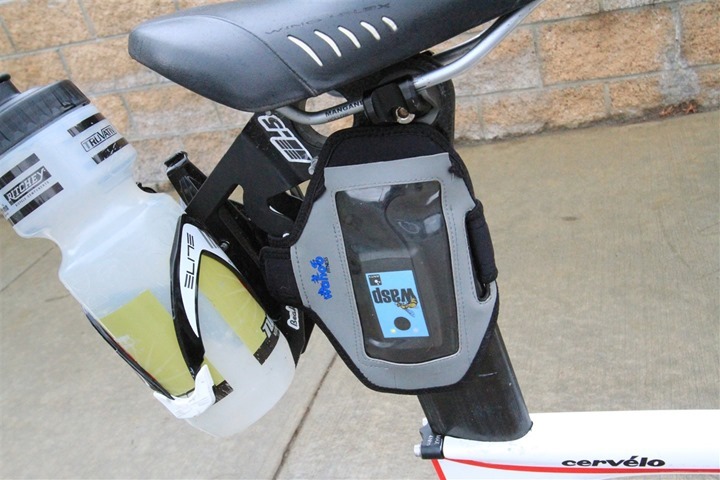
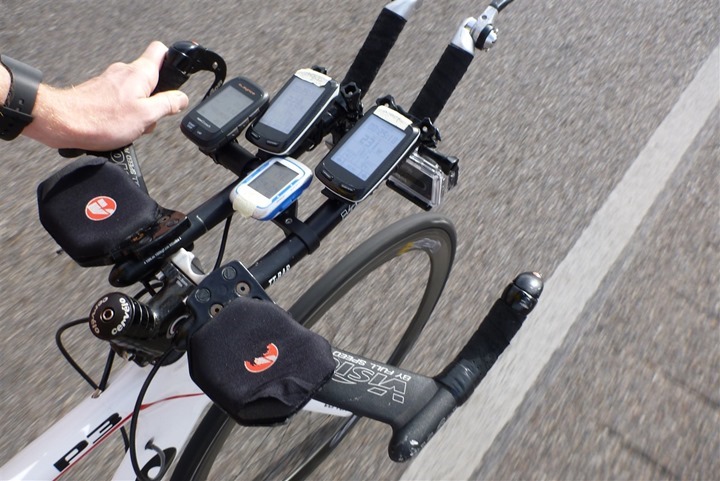
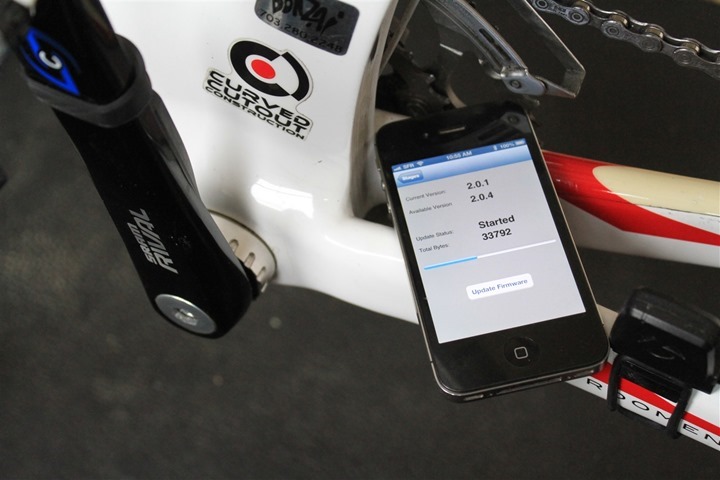
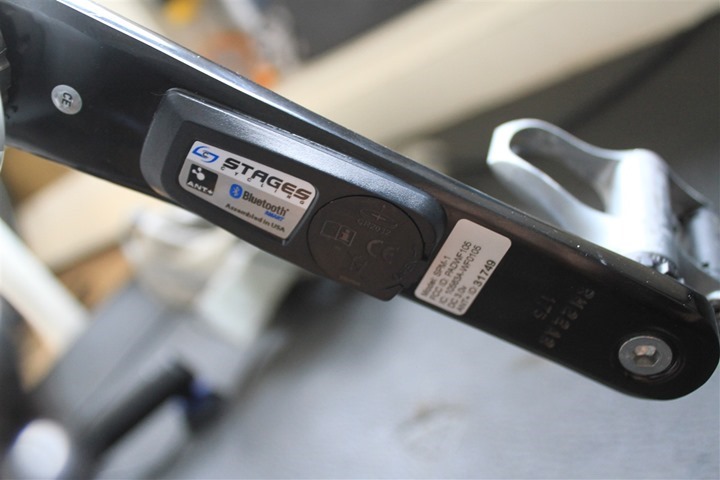
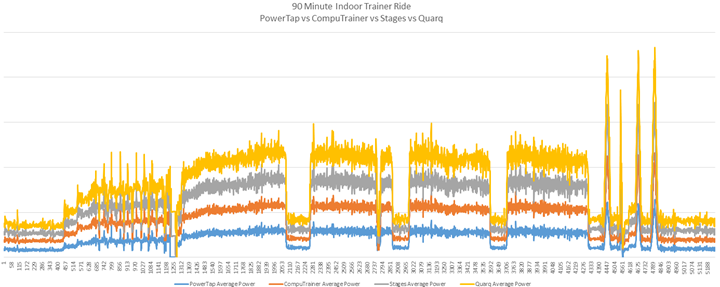
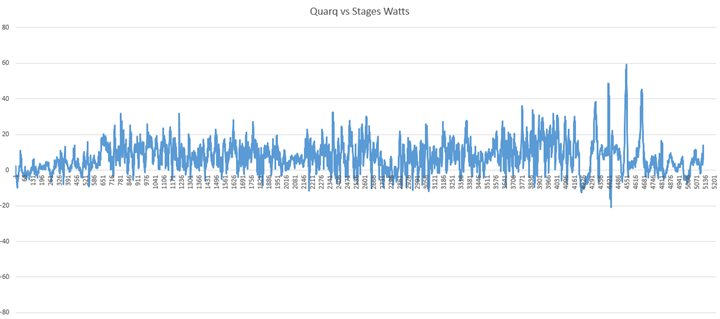
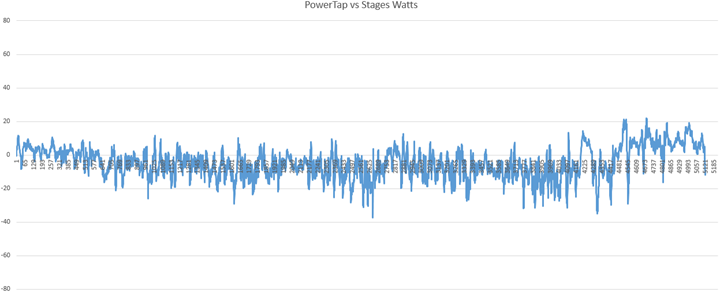
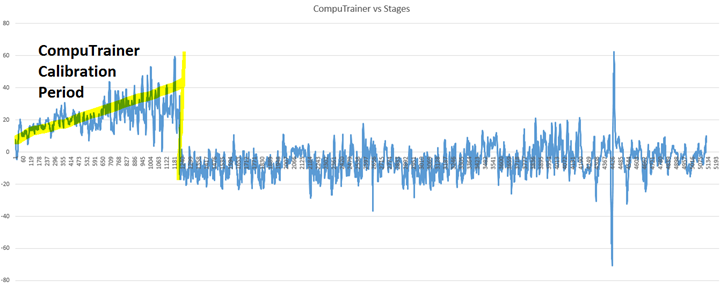
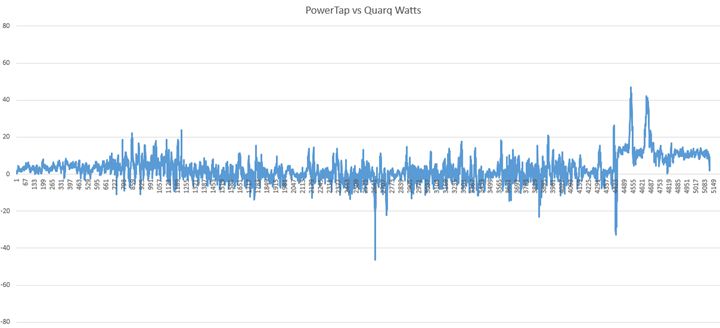


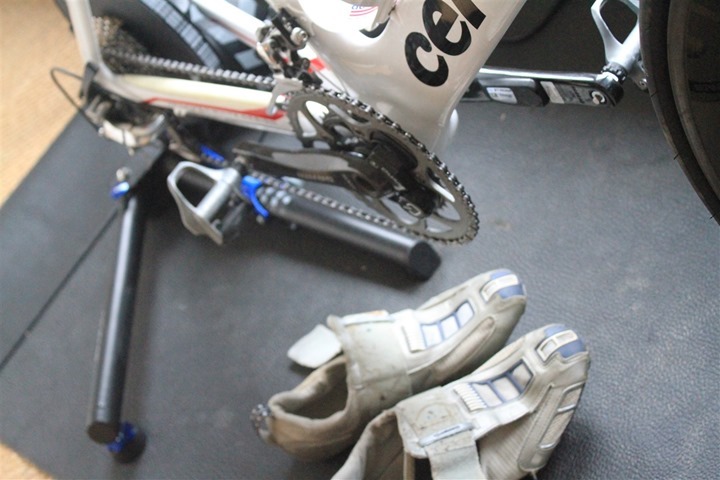
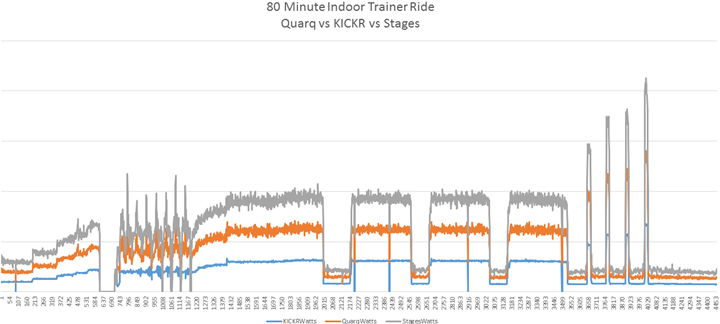
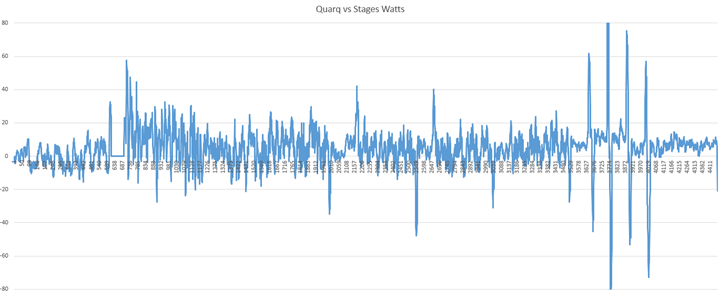
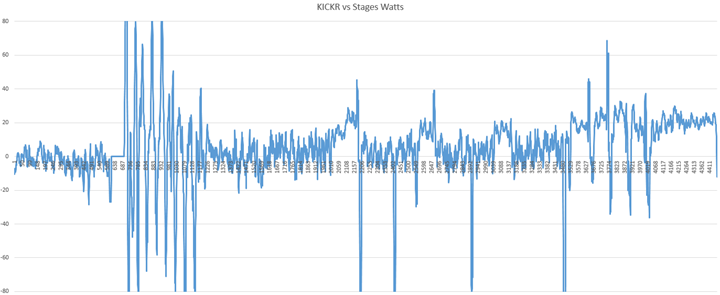
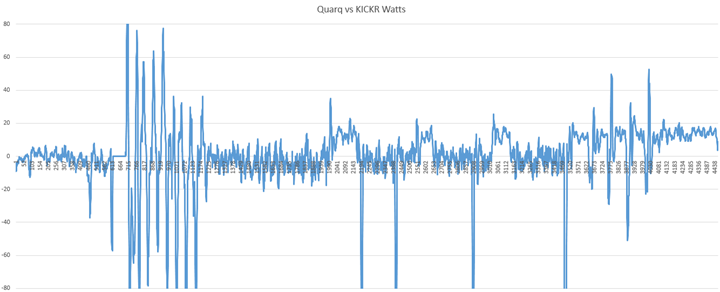

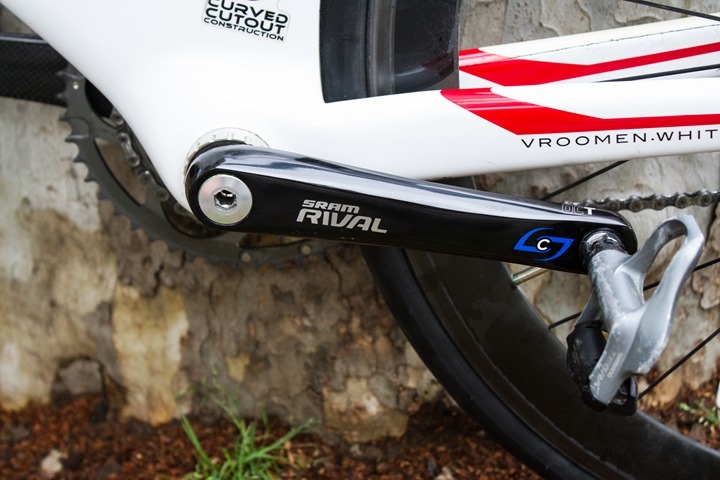
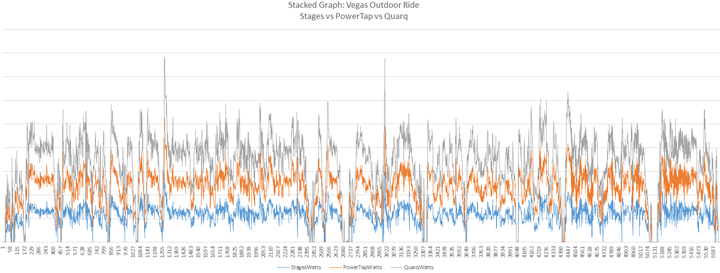
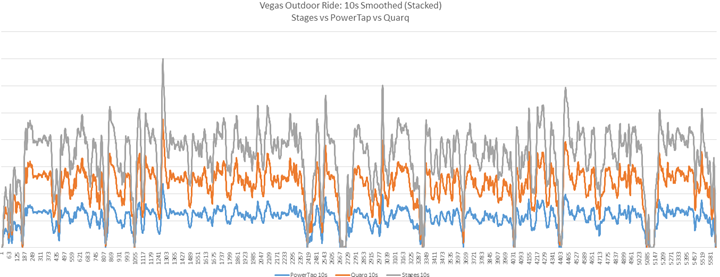
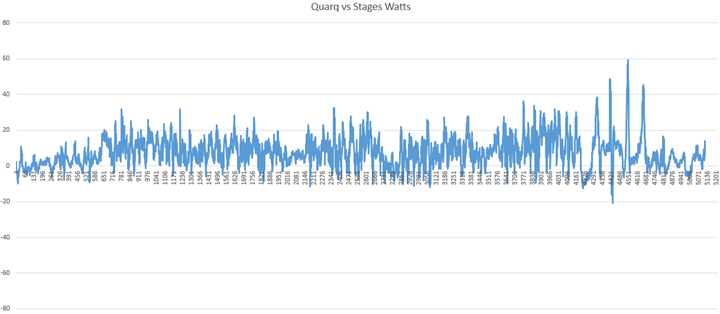
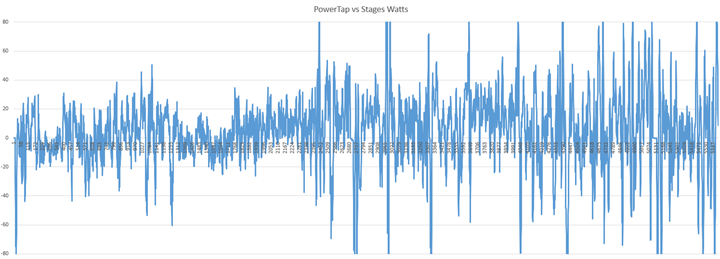
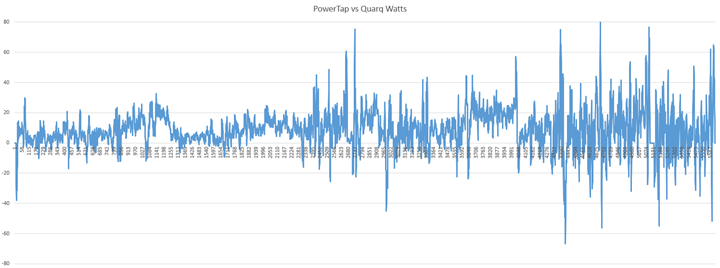
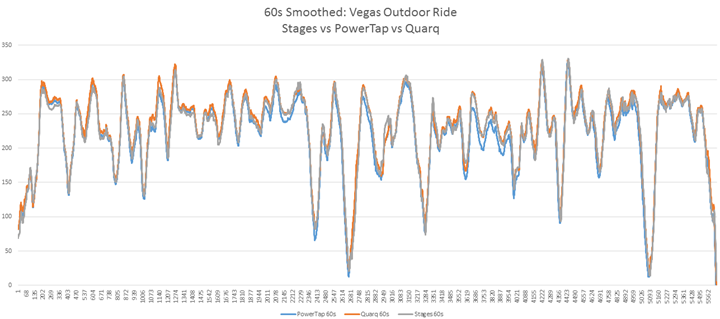


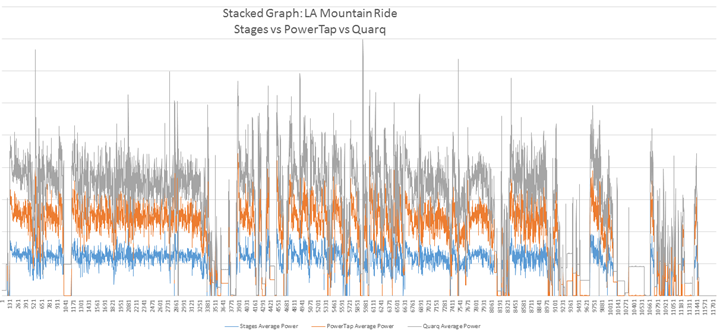

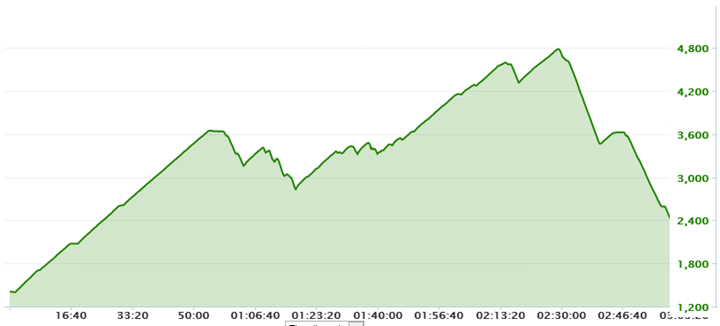
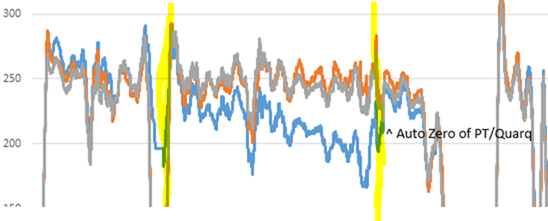
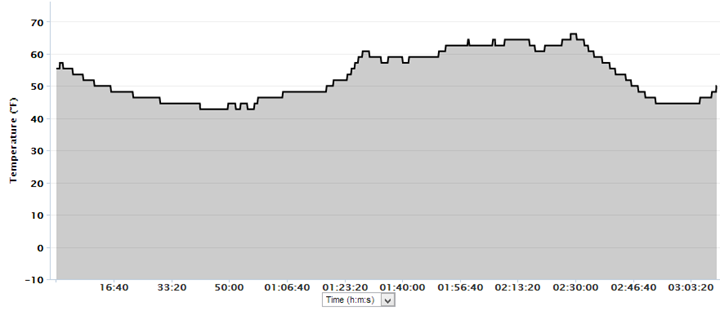
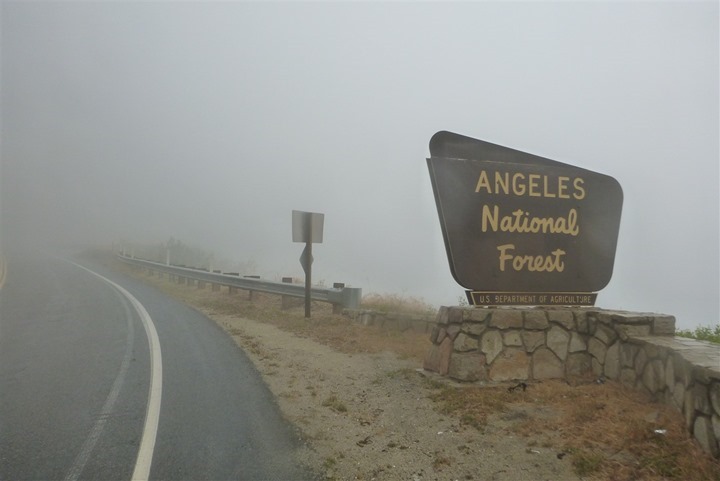

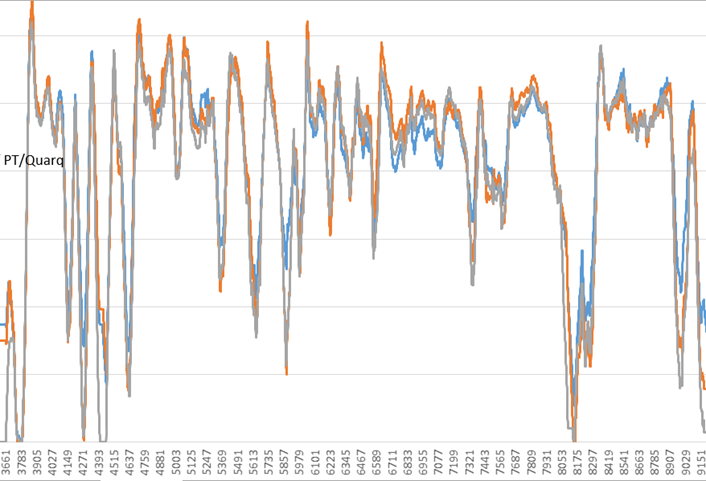
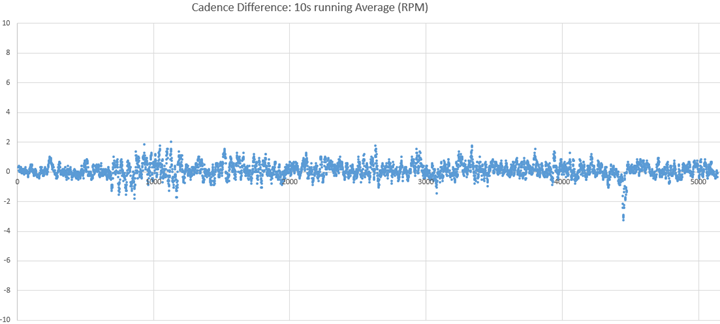
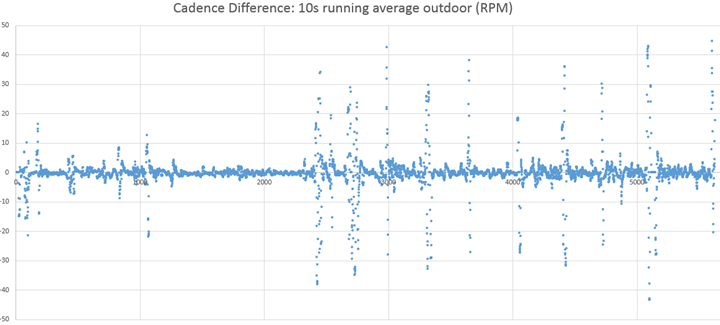


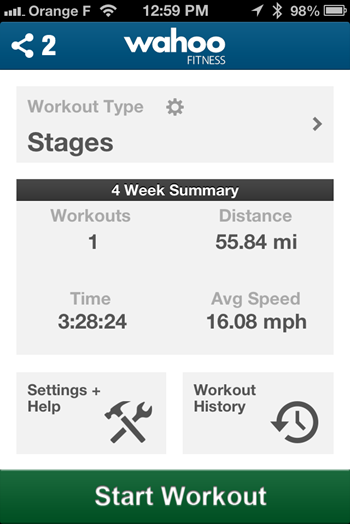
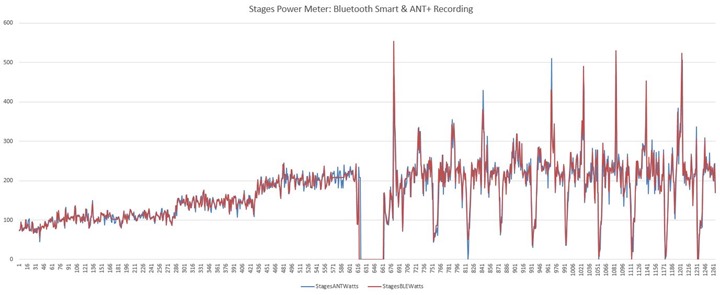

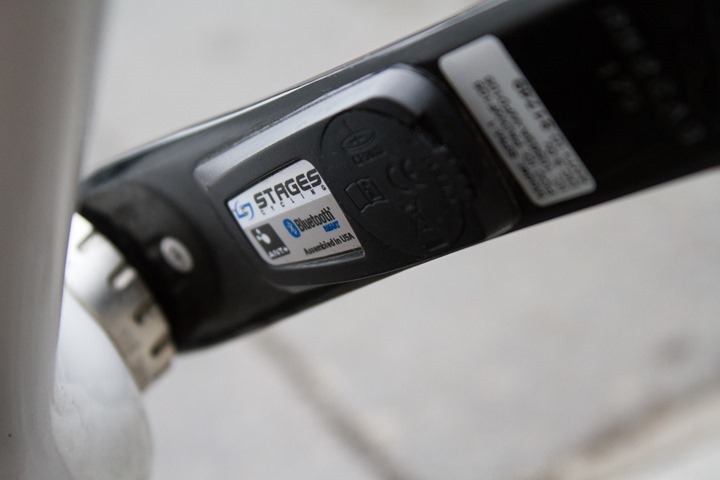





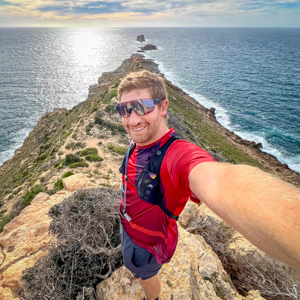









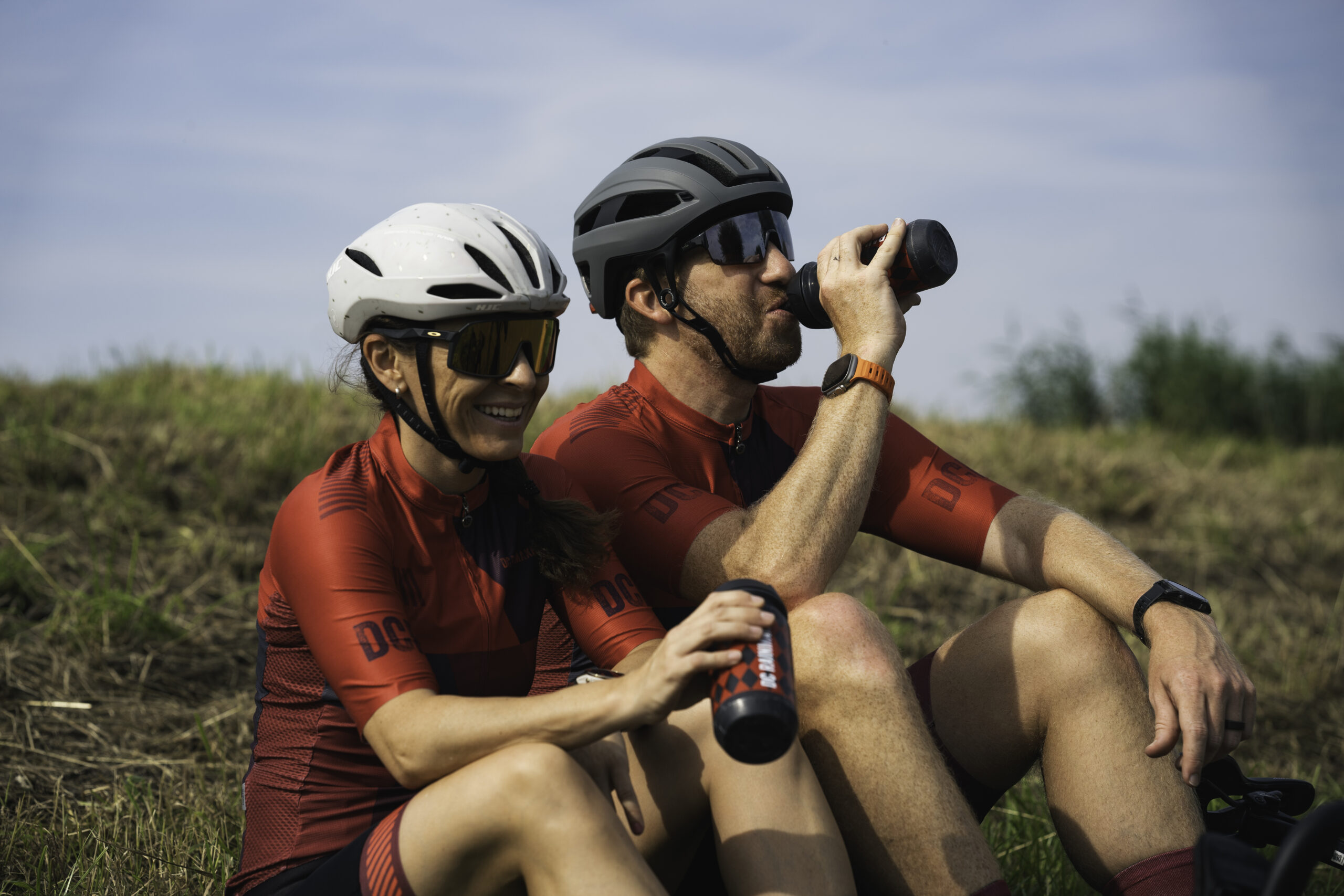

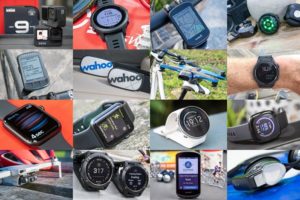

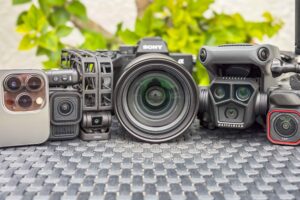

incredible work Ray!
Great scientific analisys, data collection and conclusion.
That’s the way to give the right perspective on this subject, not personal feelings but solid data!
It’s probably not so fun, but I think it would be great if you add this perspective on every PM review you’ll so in the future!
When will they ship outside US/Canada?
They’re aiming for the end of this year or Q1 of 2014.
Have you ever had problems with your ant+ signals not being picked up because too many devices were being used? On my last two trainer rides, I had the Stages power meter, Kurt inRide, TrainerRoad with Ant+ usb, Garmin GSC-10 speed cadence, Garmin HR, inRide BT HR, Garmin 800, Garmin Edge and iPhone inRide app all running at the same time. The inRide picked up fine on the iPhone but the Stages power, Stages cadence would only pick up half the time. The Garmin GSC-10 was also cutting off more than normal though would cut off about 90% of the time. I have no clue why this was happening and my first thought was that maybe too many things were running at once causiing interference. However, this didnt happen the first time I had this set up, only occured in last two setups. Then I just turned off everything and used Stages only and the signals were still not picking up consistently. Case of just some unknown interference, Garmin issue, Stages Issue or am is there something I should look for or do to make the connection stable?
I think you need to clarify. Which are broadcasting and which are receive only? You can have as many receiving devices as you want and there is no chance for there to be interference
Stages power broadcasting to garmin 800 and 500 and dropping 50% of the time on both. Stages cadence broadcasting to 500 and dropping 50%. Garmin speed/cadence broadcasting to trainer road USB, and 800 and dropping 10%. Ant + and BT Heart rate from all devices being picked up 100%. inRide power being picked up 100%.
I got the first one in Australia. I updated the firmware and agree with DC, it works great and you can pace against it just like a powertap etc.
Another excellent review. Thanks.
Just tell all those who choose to criticise you that they are most welcome to do it themselves. I originally wrote a slightly ‘harsher’ suggestion for them….but decided against it. Some people have waaaayyy to much time.
A tip of the hat to you sir! This is what I call commitment and dedication. This is why your blog is so much above others.
Thank you!
Your Cervelo looks like the Enterprise.
All you need now is pointy ears and you must train how to do the vulcanian salute properly.
I can’t believe how UGLY your cockpit looks… but I hate Vision Handles, already told you that. :-)
Lol you’re also losing the right elbow pad AHAAHAHAHAH.
Wow Ray, just wow! You’ve proven again you’re the stuff legends are made of.
This revisit highlights just how much dedication, time and effort is required to do a proper review.
Thanks and looking forward to the next in-depth analysis for whatever pops out of “The Queue”.
Hey Ray – the review is not really relevant to me as I’m not looking at a stages PM (or any other) at the moment as I’ve already got my PM sorted.
BUT, just wanted to say thanks for doing the update and all the work on this – way above the call of duty and exactly the reason I come back here all the time to check your reviews before I buy any sports tech. Absolutely brilliant work.
Cheers
Thanks for all the hard work.
I thought all head units picked up an Ant+ power signal at 1 second intervals and all Ant+ power meters broadcast was also at 1 second intervals (well packets were sent more often but the data inside only was updated once per second. The only power meter that updated the data more often is SRM which updates at 4Hz. Do the power meters change the data they are broadcasting more then once a second meaning there is data lost with what the head units see?
(Based on your power meter primer links from before link to slowtwitch.com)
The SRM is the only one that not only broadcasts but captures at a higher rate. The rate for the others will vary slightly. In the files you can see the current number of packets that it received for each second. Some power meters are just broadcasting duplicates, and some are actual differences. With the current software, the WASP averaging those out. Again, this is unique to the WASP and not something offered today on Garmin devices.
ANT+ Power protocol allows for updates at about 4Hz. As Ray says if the meters use this full capability is up to the meter but generally there are two styles either update at a fixed internal rate or update based on a physical thing e.g. wheel or crank revolution. You can find the spec document on the thisisant site.
I’m a current powertap user, but have always wanted to try the Stages. However, I run different crank lengths on my Road & Tri Bike (172.5 & 165mm). Do you think it is possible to simply stack my Tri shoe to compensate for the length discrepancy (assuming I get a 172.5mm arm and slap it on a 165mm crankset)? Would power numbers be affected?
Is this something you would be interested in testing?
Assuming you’re using shorter cranks on the tri bike to keep the hip angle from becoming too acute (a logical reason), using a 172.5mm arm *and* shimming the cleat will result in an extremely tight hip angle on that side. Even if it doesn’t impact power production, you would seem to be asking for trouble in terms of developing muscular imbalances, perhaps even injury.
Assuming you want to keep using such different crank sizes (if you compete primarily in tri, consider 165 on the road bike as well), maybe pick which bike you want a powermeter on, or buy two.
JBV,
Thanks for the inputs.
Why would the hip angle close in that case? Wouldn’t the net effect simply be the effective crank ‘length’ be 165mm? Is it because at TDC the effective crank length would be 172.5 + 7.5?
Javy, yes, that’s exactly it, at TDC (where hip angle is tightest) you’d effectively be riding a ~180mm crank with the combination of the 172.5 and the shim. Shimming doesn’t shorten the effective crank length, is simply “offsets” it higher.
Sorry for taking a couple days to respond, I hope that helps.
Another great review Ray -Thanks.
I am very interested to see if the prices of other power meters will now go down now that the Stages system has been validated by Ray and they have a credible lower priced competitor..
Thanks again for your thorough reviews.
Have you tried the Stages meter on another receiving device other than the 510/800 Garmin series ?
Yes, I’ve used it on everything from the O-Synce, to the Garmin Edge 500/800 (as well as the 510/810), to the iPhone with ANT+ adapter, to the WASP. It follows the ANT+ power meter standards, so it’ll work with anything that supports the ANT+ power meter spec.
Ray, I see from your photos you have a 510 connected to a powertap. I have yet to be able to connect those two devices. I swapped out the 510 for a replacement model and have the latest firmware on the g3. Did you have trouble connecting. Garmin says they know of the issue and are working on it.
All the devices in this review are Edge 800 devices, with the 810 only used to demonstrate the power steadiness in that one video.
As for issues with the 510 and the PT, I thought it was a pairing issue – meaning it wasn’t surfacing the search correctly, but if you knew the ANT+ ID then you were good to go.
Thank you. Have you (or can you) confirm success with iPhone Bluetooth and/or Garmin 910XT?
The reason I’m asking is that I have purchased one and have only been able to verify solid operation on a Garmin 510 (borrowed) but haven’t bern successful with Bontrager Node 1, Magellan Switch Up, iPhone 5 ( Bluetooth – wahoo fitness ). Stages support has been great to work with and have been very responsive.
My Stages PM works great with my Garmin 500, but will not stay connected to my iphone 5 if I put the phone in a jersey pocket. I think I’d have a better chance if I put the phone on my bars, or perhaps in a seat bag (or in a cellphone holder in a bottle cage).
For those interested in the Bluetooth Smart aspects, I took some time on my flight tonight and analyzed this morning’s ride where I had concurrent recording with the Wahoo App (Bluetooth Smart) and an ANT+ signal (Edge 800). I’ve added a new section just before the conclusion summarizing (in detail of course) those results. I’ve also added the raw files from that ride into the zip file at the end of the review.
I’ve used the Stages since March. I use it paired with my 910xt and sometimes with my edge 800 and I’ve never had any issues. I haven’t even performed the firmware upgrade yet ( need to find someone with a iPhone so I can utilize the Stages app….). it just works, which is a really nice thing.
Stages just issued another update and Wahoo now works great on iPhone 5. I did a long term ride and indoor trainer ride and no drops ( or 0 power ) unless I pressed pause button ( in which case this is expected
Hi,
Thanks for doing this. One quick question, given the positioning would you say this is compatible with RideSense? See photos below for what i’m referring to.
link to blog.tredz.co.uk
link to blog.tredz.co.uk
Thanks in advance, any reply is appreciated!
What do you mean. I have the 2013 tcr advanced sl frame and it works. But if you sync with a garmin head unit, it will sync to whatever you synced first.
So for me I took off my ride sense and synced with stages. So my cadence and power are from stages.
If I sync ride sense after the stages. My speed so theoretically be from ride sense but you won’t be able to utilize cadence unless you have it synced first. But it seems its cleaner in look by syncing and using the stages cadence though.
Thank you for the review! I’m sure stages is gonna get some more business because of this. I hope they thank you!
I had a few questions about power meters and being that I’m new, this may be for newbies.
Question is…it appears that it’s not about trying to purchase the SRM to ensure that we get a good power meter, it’s about how consistent a power meter is over the duration of use.
And that you mentioned that the SRM records at a higher resolution than the others, does it matter to most of us as cycling enthusiasts?
Also, it is it true that the current power meters on the market, not all of them have temperature compsensation algorithms built in? I would think if so, this is a plus for the stages.
Also, speaking toward value, it appears that the stages could be the best bang for the buck power meter.
Also, with the firmware updates, I’m wondering are you using the latest firmware update or was this before the most recent one (I think last week at the begininng/middle of June 2013).
How important is it for training knowing right and left balance compared to just a left crank power reading?
Thanks once again!
I would like to see if the differences shown in this review also appear with the SRM power meter, which is known to be the “gold standard of the industry”.
That would show if the huge difference in prices represent a huge difference in the data reliability.
Excellent update Ray. I just ordered one for my Cruzbike Vendetta.
The KICKR comparison was good to see as I have one of those too and have been wanting to start working with power on the road.
-Eric
Anyone care to guess who designed the kickr?
Great review! Thank you for your tireless number crunching. I think the real question now is whether or not you will be using it?
Did quarq add temp compensation after you bought the device used in this comparison? They claim to have it in their FAQ:
link to quarq.com
Do Quarq power meters feature temperature compensation?
Quarq power meters are highly engineered and feature multiple temperature compensation systems. From the intrinsically balanced strain gauge arrangement to clever measurement circuit design, temperature effects are isolated and eliminated at every step in the system.
I think quarq are very careful in that statement – Reading between the lines I think they have tried to engineer out problems with temperature variation….not actually include a formal temperature compensation system that actually measures the temperature.
Ray, thank you for your dedication in providing this updated review. I have no particular vested interest other than a shared fascination with data and accurate interpretation. I admire your magnificent efforts.
Excellent review, Ray. Appreciate you digging as deeply as you do. It would be interesting to see how the Stages performs on a Mountain Bike ride, where the variability of cadence and power is very large.
Thanks again!
I don’t even have a bike and read through the whole review! LOL. You are a true techno geek. Great job. I applaud your dedication.
Great review followup. I received my Cannondale SISL2 stages unit last week. I was shocked how light it actually is. Mine weighed in at 13 grams with the battery installed, 7 under the already ridiculous 20g listed weight.
There was question above about Bluetooth connectivity. More specifically, have you used the Wahoo fitness app in Bluetooth mode? Have you had a chance to compare data capture between an iPhone in Bluetooth versus a Garmin with ANT+? Any difference in the data stream or variability?
Thanks for an awesome job!
I didn’t focus on the BLE portion as much, instead focusing mostly on the ANT+ piece. That said, I did actually do it on my 70min trainer ride today (BLE to the Wahoo App, plus concurrent ANT+ to an Edge 800). I did realize though it isn’t inclusive of the update two weeks ago.
I’m just jumping on a place in three minutes (for 8 hours), so I’ll hack at the data on the flight. But, if it’s looking wonky, I’ll redo with the two-week old firmware version (which is said to address some BLE issues).
Ray, on your updated ANT+ vs BLE chart at about 571 on the x-axis there is a flat spot for BLE watts while ANT+ is showing some variances. Any idea what that is and if it might represent some of the comments about folks losing BLE signal for a bit?
Yes, that was specifically the spot I was talking about there. What’s sorta interesting is that there’s two tiny variations there on the BLE side. Again, this was on the firmware pre-BLE update, so it’s plausible that’s one of the areas addressed there.
What’s funny is just how close that section still came out – likely because it was constant power anyway.
I wanted to include it sooner just to give folks some context on it in the larger scheme of things.
I’ve got a Stages arm on a Salsa Mukluk fatbike. I rode it for 1:45 a couple days ago on some fairly bumpy singletrack. The bike has no suspension other than big fluffy tires and I’m 210 pounds in gear. Was averaging just over 8MPH.
My data shows five “impossible” cadence bounces (150-202RPMs) over that time.
Other than that, the data is exactly what I would expect given the ride and how I felt in terms of the power it showed. This is the only sane way to get power on a fatbike right now (some have modified PowerTaps to work, but that’s far from trivial). I also have MTBs with Quarq and SRM powermeters and a PowerTap on my road bike, so I’ve got a pretty good idea what my power should be, anyway.
So the cadence issue isn’t fully fixed yet, but it’s not horrible, either. At least not in my situation. I’d like to see it fixed, but certainly have some lenience on this one.
–Donnie
Yeah, I believe they are still working on mountain bike related issues. Unfortunately as noted I lack such a bike anymore, and aren’t able to give that its due.
That’s an absolutely brilliant test: the completeness and critical attention you bring to these tests makes so many other tests look silly.
One question, however, about the mountain ride: the Quarq is clearly doing poorly. The effect of the re-zeroing seals that deal. But the Powertap appears to barely shift relative to the Stages during re-zeroing. That leads me to suspect the issue with these two was a shift in L-R balance, not a systematic error in the PowerTap.
Shifts in L-R balance with terrain (intertia), cadence, and fatigue are expected.
The net result is it seems Stages has gotten its act together and while a 2% accuracy claim was never possible due to pedal asymmetry, at least cadence is improved and it’s likely sufficient for pacing of efforts within a ride, if not for determination of small changes in fitness over time due to the L-R balance confounding factor. It’s also clear that I don’t regret using a Powertap versus a Quarq.
Hi Dan-
It’s an interesting question. The aspect that still has me believe the PowerTap shifted slightly was that after I broke out of the fog/rain and into the sun (where the temp was relatively stable), future climbs (since most of the ride was climbing it seemed) were much closer again (after auto-zero would have kicked in on some short descents).
What models of each of the PowerMeters are you using? ie. Which Quarq? Which PT?
By the way, forgot to mention that the review, for me, was riveting and very educational. You discuss many of the proper operating procedures and other things we need to be aware of (temp, cadence, PM corelation) when gathering data, racing, or just enjoying the ride. Thank you so much for the informaiton. I plan on sending this link to serveral friends that have powermeters for their general knowledge.
This was a PowerTap G3, and a Quarq Cinqo (original).
I didn’t read through the review in detail so it might be mentioned but were you using one of the new Quarq units with Omnical?
There’s a picture of the bike with the Quarq on [url=https://www.dcrainmaker.com/2013/04/rockslide-angeles-aerodynamic.html]this blog post[/url]. I don’t know if you can tell that’s Omnical or not, but it looks like an older model to me (I am not sure, however).
No, this was an original Quarq.
Another CON might be…. No bb30 Sram Road option yet! Otherwise Id consider getting one!
I’m in the same boat. If they had an affordable option for bb30 I’d be in line to get one.
Cannondale would be your best SRAM compatible BB30 option that stages supports.
Ray,
You rock. Just wanted to say thanks for investing the time to do the comparative analysis. Recently bought an Argon 18 Gallium Pro with the Stages unit in an Ultegra crankset. I’ve paired it w/a Garmin 310xt head unit. After updating the Stages and Garmin firmware a couple weeks ago, data is looking consistent with few drops. I’ve set the Garmin to nix zeros and do the smart recording and that seems to help as well. Thanks again for the great analysis
Would you find any benefit from a virtual elevation plot, as proposed by dr. Chung in the Power Meter 201 article? Could the difference be due to temp. compensation?
Thank you for giving Stages more consideration. Now there’s another PM to consider.
Really hard to understand that level of drift from the Quarq. 50 watts is over 150 offset counts at 90 rpm. I have never seen my Quarq move more than 20 counts due to temperature ( and I’m in Canada where inside vs outside temps on a late fall day can be 50 F deg or more) . It’s too bad you did an autozero instead of a “calibrate” command to see what the actual offset numbers were. In fact, did you do a calibrate before or after the ride? Did the offset numbers change that much? Because if a Quarq changes by more than 50 counts, Quarq will say that the crank is “broken”.
Hi Bob-
Note, I manual zero’d twice during that ride. As noted, once at 0min, and again at 15min. While another manual reset would have been interesting from a numbers standpoint, at that point in my ride an auto-zero seemed to put it back in check (temporarily anyway).
This is actually an area that spawned an interesting conversation amongst myself, Garmin, O-Synce and the ANT+ guys (this very ride). The idea of recording the offset values in the .FIT. O-Synce has seemingly taken the lead there and is already working with both the ANT+ folks as well as a number of the power meter companies on accomplishing this. Good stuff.
This was really the one rare circumstance where I’ve seen anything like this from a Quarq.
I apologize if this has been answered somewhere else but I was wondering if it’s possible to designate the cadence signal from a Garmin GSC-10 as primary over the Stages PM? I use a Garmin Edge 800 and already use the GSC-10 for cadence and back up speed. So ideally I would think it would be better to use the GSC-10 so that any data drops would not include cadence information.
After looking through the Garmin Support pages, I found the following FAQ which appears to answer my question, although with reference to a PowerTap rather than a Stages. I presume the answer would be the same for a Stages. From the Garmin site:
Will my cadence reading be derived from my PowerTap Power Meter or from the GSC 10 Sensor?
Email this Answer
Print this Answer
01/14/2013
When using an Edge 810, 800, 705, 510 or 500 that is paired up to a PowerTap power meter and a Garmin Speed/Cadence bike sensor (GSC 10), it may be noted that both accessories are capable of transmitting cadence.
When using a PowerTap hub and a GSC 10 sensor at the same time, the Edge devices will report cadence through the GSC 10 sensor. However, if the GSC 10 sensor is not present, cadence will be reported through the PowerTap hub.
Reference Links:
PowerTap – link to cycleops.com
GSC 10 – link to buy.garmin.com
Based on what i just tested, if you have a GSC-10 and its magnet attached to the crank arm, Garmin Edge 800 (not sure about others) takes the cadence reading from the GSC-10. During my initial test, i had the magnet attached to the crank arm. The Edge 800 was able to pick up cadence reading lower than 30 (i went as low as 25). In the second test, i removed the magnet from the crank arm and i pedaled at the same low cadence. The Edge 800 was not able to pick up any cadence lower than 30. This meant it was using the cadence reading from the Stages power meter.
One thing i am not sure of is if i have the magnet attached to the crank arm and the cadence is higher than 30, would the Edge 800 be picking up the cadence reading from the GSC-10 or the Stages power meter.
Based on what I’ve read (and posted above) from Garmin, I would have to say that as long as the magnet sensor is in place then it is the primary cadence signal. Garmin has indicated that the same applies to speed as well. As long as you have the wheel magnet in place, speed is determined by the magnet rather than by GPS (Edge 800 at least).
Thank you Changren for that information, it precisely answered my question, and for me, is the last issue I had before making a Stages purchase.
Good stuff, nice test. Another way to always quickly and easily test where power/cadence is coming from is just to unclip the left leg and right-leg peddle. The Stages will instantly drop power/cadence if no torque is applied to the left-leg (as demonstrated in the original review). It’s an easy way to validate things around connectivity. :)
As for pros and cons of GSC-10 over Stages, the main one I could think of based on what I’ve seen is actually just one-legged drills. I’m just not seeing it as an issue in normal cadence ranges (basically anything above 30RPM) with the Stages.
And in fact, on benefit of the Stages cadence over a GSC-10 is that if your GSC-10 gets bonked out of alignment, you’ll drop cadence, whereas the Stages can’t really get bonked out of alignment. This is somewhat rare, but it tends to happen about 2-3 times a year for me (getting bumped).
Something happened yesterday during my ride that made me rethink if when both GSC-10 and Stages Power Meter are present, whether the Edge 800 would default to GSC-10 for cadence. For some unknown reason, i was getting a lot of power drops. Immediately when the power dropped, the cadence went to zero. The cadence would go to zero every single time the power dropped. During some of the extended power drop periods, i noticed that eventually, Edge 800 would pick up cadence, i assume from GSC-10 as power was still zero (or two dashes).
This seemed to imply that Edge 800 is picking up cadence from Stages Power Meter even when GSC-10 is present.
Does anyone know whether Stages Power Meter would send a battery low message to the bike computer? I am wondering if the numerous power drops i experienced yesterday was an indication that i need to replace the battery.
According to the Stages support personnel i talked to, even when a bike computer detects a separate cadence/speed sensor, like the Garmin GSC-10, it will only take the cadence reading from the Stages Power Meter. Based on my experience, i have to say what he told me is true.
Regarding the frequent power/cadence drops that was happening to me the past few days, the Stages support personnel told me it may be due to ANT+ interference from other devices. His suggestion was to unpair all devices and then manually pair up the Stages power meter first (by manually entering its device ID). After that, manually pair up with other devices. I went for a very short ride and so far i have not seen any power drop yet. I will find out on my longer commute home if that is still the case.
Is there a discernible difference between carbon and alloy crank arms? I have a SRAM red crank currently
A few grams. I have a Rival 175mm arm with the Stages unit on it. I can’t compare to Red, but it weighs 35g more than the Force arm I replace on the bike.
I just ordered my Rival Stages PM b/c the weight difference is so small between it and my 2013 Sram Force Crank. It’s only one side too.
Just received a SRAM Rival (175) GXP Stages power meter today. It weighs 240g. The SRAM Red Exogram crank arm (with a Garmin GSC-10 magnet still attached) i removed weighs 150g.
If I could make one suggestion – it would be helpful if you could stick to one colour per powermeter across all the graphs rather than switching around.
Apart from that – nicely done.
You are awesome. Thanks for all the hard work.
Wow, great effort, thank you Ray! Most interesting revelation here is the impact of temperature compensation; here in SF Bay Area most of my rides have large temperature changes over sustained climbs (e.g. 79F to 61F over 45 min / 7 miles two weeks ago, 77F to 62F over 47 min / 8 miles couple of days ago). For riders in areas of strong microclimates, the Stages may have quite an advantage. I have had my Stages since beginning of March and aside from a few 1-2 sec power spikes earlier (none with the latest firmware), the data has been consistent from ride to ride and matching my “sensations”.
Fantastic Ray, as ever! Thank you!
On the CompuTrainer, in your opinion what is the best way to warm-up the CT that gives a stable cal. number. I have found that after some intervals, I tend to do another cal. spin up, and the number could be out by 2-3 points. Initially its stable with my PT but then I see it drift sometimes. Its definitely not a faulty CT, as I see the same thing with my 2nd CT.
Thanks
Funny, someone just asked this yesterday via e-mail. Here’s my standard CompuTrainer calibration ‘approach’:
1) Tighten screw/knob until I can hold the flywheel (blue thing) and then if I try and move the wheel, it won’t budge.
2) Then on the handlebar unit go into calibration mode (two buttons at once), and spin up to 25MPH and let it coast until it flashes a new number
3) If the number is at ~2.5 (cold, pre-ride), then it’ll ‘drift’ to about 2.0 by time you finish a 10-20 minute warmup. If the number is anything beyond that, reduce resistance and repeat. If already warmed up, then you’re (officially) aiming for 1.8 to 2.2. For reviews I aim for 2.00.
4) Press set to confirm
5) It should now show the new calibration value.
I used to do 10 minutes warm-up on the CompuTrainer, but I found (as part of these reviews actually) that I was still seeing drift. 15 minutes is pretty good, but 20 minutes solved it entirely. My workouts essentially include a 10-minute warm-up (for me), then a 10 minute cadence drill section. So I’ve been doing it after both sections for reviews.
Hi Ray! Great review although i can hardly understand. I don’t have a powermeter and is looking to buy my first one, and of course, the stages one seems to do less damage to the wallet, especially me being a student. I don’t exactly understand powermeter. I would like to ask you how oval and non-circle chainrings like the osymetric will affect the crank based powermeters. It was mentioned in the slowtwitch article (link: link to slowtwitch.com) but i don’t quite understand it. Maybe you could explain it in simpler terms or in other words, make it idiot-proof. Adding on, what can be done to minimize or completely remove this effect if say the effect of the non-circle chainrings are negative. Thanks!
For troubleshooting purpose, i think it may be better to have a separate device (like the Garmin GSC-10) that captures cadence.
I went on my first ride this morning with the power meter and i did not have the GSC-10 magnet on the crank arm. At one point during the initial part of my ride, i noticed there was a cadence drop for a 10-second portion (as validated later via Garmin Connect and Strava). Since this is my first ride with the power meter, i’m not exactly sure what caused it. The power meter has the latest firmware.
If Garmin GSC-10 was providing cadence data, i would be able to have a more concrete proof to show that Stages power meter was suffering from power drops.
The Garmin GSC-10 is not perfect. Occasionally when i ride over the University Bridge (a mostly metal drawbridge), i would get cadence drops until i’m on the concrete part of the bridge. But just for narrowing down the power drops issue, i think i’ll put the crank arm magnet on.
Chris, this explanation might help a little:
link to bikeblather.blogspot.com
In short, any PM that looks at cadence as the average rotational speed over a single pedal cycle (which I believe includes the Stages since it’s accel is looking at peaks in the signal formed by the gravity vector and looking at the time between peaks) will suffer from artificial power inflation.
On my return route, the same portion of my route that had a cadence drop this morning also had cadence drop. Looks like whatever that’s causing the cadence drop is environmental. Since Garmin’s GSC-10 also suffers from similar cadence drop at the same spot, i don’t think installing the crank arm magnet will do me any good. Apparently, cadence sensors don’t like metal bridges :)
Ray, what would be the advantage, if any, of using cadence provided by the Garmin GSC-10 over the Stages power meter?
Hey Ray,
Great review – thanks for taking such care and time to throw down all the information anyone could possibly digest.
Curious, just to think comparatively, how you would weigh the Power2Max vs. the Stages for a new power user? I know thoughts on brands of powermeters tend to be rather dogmatic, but I thought I’d throw this out there for you (or anyone else) to chime in on.
Cheers,
Pat
I think you wouldn’t really go wrong with either at this point to be honest. They both have temp compensation in them, the P2M does have emulated left/right balance (though they will be the first to admin it’s sorta useless in the grand scheme of things). The Stages has BLE + ANT+, the P2M doesn’t. The P2M would be inclusive of any left/right inbalances though.
Price-wise the P2M will cost more, but you’ll have more flexibility there from a bike component standpoint.
In other words, it all comes down to what requirements you have.
I have had my Quarq S2275 replaced 5 times, no jokes “5” times, one of them only lasted 2 weeks. Do you think it has anything to do with them being discontinued, i’m willing to bet money on it.
So comment no 36 ” Quarq power meters are highly engineered and feature multiple temperature compensation systems. From the intrinsically balanced strain gauge arrangement to clever measurement circuit design, temperature effects are isolated and eliminated at every step in the system” that’s a big statement. I believe the Quarq mtb unit has a design flaw and is leaking water or moisture into it.
I’m definitely going to try the Stages, infact I just ordered it. Lets be honest most of us non pro athletes want to use power meters to track fitness, freshness and form so if the average power readings are consistent using the same device then this is what matters.
Ray great, great review.
Hey, great review.
For such mental number crunching in future a stats program like ‘R’ might be useful – it’s a bit user unfriendly at first but is incredibly capable at handling massive data sets. Would easily calculate the deviations between individual units.
Mark
Yeah, ultimately I want to be able to standardize everything a bit more – since PM reviews will only become more frequent.
Today I use some semi-standardized Excel sheets. But I’d like to just get the data into databases and then have a front-end reporting mechanism to make it easier for me to generate the reports (addressing things like coloring even). It’s on the list for the summer (though, my list is growing day by day…).
Your dedication to both cycling and scientific method is awesome.
You should really have a look at http://www.tableausoftware.com
No, I don’t work for them, I use their software for my business and it saves a huge amount of time over charting and data visualisation in Excel, and it’s incredibly easy to publish. Have a look at their gallery. It’s expensive software but
1) you can download a free eval copy of the desktop software, good for a month
2) Tableau Public allows you to use the whole thing permanently for free so long as you publish up your work (which you do anyway).
Like anything it takes a bit of learning but there are good video tutorials and community forums, and given what you can do in Excel this will be child’s play after a few days.
Good luck.
That actually looks pretty cool. The one challenge I have is getting the data from the various fitness file formats (primarily just .FIT these days) into CSV-type formats. Once there’s it’s much easier.
And while it’s a relatively easy step through Golden Cheetah, it’s still a step (import in, change some settings, export out, etc…). I would love to be able to just drag and drop 4 .FIT files from the four units (or a WASP file) into the software and have it ask for which units were which. Then I’d be thrilled.
Hi Ray, what tool are you using to convert .FIT and .TCX files to .CSV?
Golden Cheetah. It’s free and quick.
Neat little cross-post on BSNYC today; nice.
bikesnobnyc.blogspot.com/2013/06/in-xanadu-did-kubla-khana-stately.html
I think we should get a little race together with you, BSNYC, and FatCyclist. I’m pretty sure you’d tear both of them to pieces…
Even funnier since I’m in NYC today…
Ray, i know your preference is to have zero-recording enabled on cadence. I understand why zero-recording should be enabled on power but does having the zero-recording disabled on cadence have any effect on power?
None that I’m aware of.
Never quite understood why you would ever have zero-recording of cadence enabled. Power is obvious as you are resting while coasting, so averaging in zeros makes sense. But for cadence, I want to know that I spent most of my time at 95 rpm, not that when I ride up a mountain 10% pass and then coast down the back side my average is 60 rpm. So what purpose does averaging in zero cadence have?
Is Stages still offering complete cannondale cranks? I can’t find them on their webpage.
Yet another amazing review Ray! As an analyst I definitely appreciate the rigor that you apply to your reviews.
Quick question: It sounds like it is critical to stay up to date with the latest firmware in this product, which then begs the question as to how you actually go about doing that? On the Stages website they provide a link to an iPhone app, but what about us PC and/or Windows Smartphone users?
Nothing for Windows, Android, or otherwise. Essentially you’ve just gotta find a friend with an iDevice. Which, I suppose given how rare you’d need to do a firmware upgrade, that’s not horrible or hard to find.
The challenge is the other platforms have very limited support for Bluetooth Smart, extremely limited. That said, ultimately they’ll need to find a way to offer updates for other platforms, as long term requiring an iDevice isn’t really realistic.
And we now go back to waiting for the Vector for yet another PM review….
Was wondering if you might post/email me a copy of the excel sheet… As a dev with some time on my hands, would love to be helpful, and make an easy auto convert script so you don’t have to manually do the graphs and such for comparison, down the road.
Yup, I’ll send it over later today. Most of what I use is in the raw files, but I have some separate spreadsheets for the graphs/etc… Thanks!
Great work Ray – thank you.
Are you planning to evaluate against the SRM unit anytime soon?
– David
I don’t plan to at this point. Mostly as I’m not sure that would gain anything. Both the PowerTap and Quarq are more than capable power meters on the market today (excluding any minor blips seen above). SRM units aren’t immune to blips either, as every power meter has their oddities (in fact, the Slowtwitch guys showed some of those SRM blips).
Hi – quick question. Do you know if it will be compatible with SRM’s power control 7. On tech specs, it should but a few internet user suggests otherwise. I want to keep all my training files in one software if possible.
Hi John-
I checked with the Stages guys on this. Here’s what they said:
“We are not cross-compatible with the current SRM PC7. As I understand it, they use a proprietary variation of the ANT power transmission protocol that relies on crank torque frequency, which we don’t provide in our data packs. Unless SRM has changed their firmware to receive event based power via the ANT+ standard.”
I would love to see an article ‘dummies guide to calibrating a powermeter’.
I have a powerbeam (which I have only figured out how to calibrate the resistance unit, never the actual power meter which I understand to be different – and then only with the Joule 3.0 included)
I also have a powertap on my racing wheels but in my most recent race it was TOTALLY off. I use it with a Garmin 910
And I just got a stages for my cross bike – also to be used with the garmin.
I have never read a really good overview of why, how, how often etc.. to calibrate powermeters.
Thank you for your blog – its great
Philip
It’s actually something I’m working on – sorta the Bible of Power Meter Configuration advice.. I’ve got most of it written up, but will then be sending all the pieces to the various power meter companies just to validate it.
Guessing you’ll include the difference between selecting the calibrate option on the garmin and backpedaling on the quark or coasting on the powertap? (along with how long you have to coast, I’ve heard it was 5 seconds)
Any chance you could include what to expect when the battery runs low? I know my powertap elite on the Edge 705 just starts dropping power and then stops broadcasting but I thought some head unit and power meter combinations give a low battery warning. Thanks
Eli, my Stages battery just died yesterday. It was after a long commute in the rain and after hearing some issues with waterproofing I was fearing the worst….but luckily a quick swap a roo with a new cr2032 and I’m back in action. FYI, there was no low battery indication from the Stages to my 910xt warning me of a low battery, it just stopped transmitting data.
Gunnar,
Stages advertises about 200 hours on the battery life, do you feel like you got reasonably close to that on your battery? Just curious so I know when to start carrying an extra battery with me.
Gunnar,
Stages advertises about 200 hours on the battery life, do you feel like you got reasonably close to that on your battery? Just curious so I know when to start carrying an extra battery with me. Thank you.
Gunnar, Stages advertises about 200 hours on the battery life, do you feel like you got reasonably close to that on your battery? Just curious so I know when to start carrying an extra battery with me. Thank you.
Eli – Yes, I include both ‘types’.
I hadn’t thought about battery, but will look at appending.
Grif:
Regarding battery life. My very unscientific thought is that the cr2032 battery does probably come close to the advertised 200 hrs. FYI, its super easy to replace the battery. The compartment has a simple spring latch to open. Considering the size, weight and cost of a cr2032, it would be easy to throw one in your saddle bag if you were worried about losing power data on a ride.
Question. Stages doesn’t support Rotor cranks, but does it work with them? Great reviews, Ray, Thank you!
Thanks for the great review! Is the Sram Rival crank you used a good quality crank? I’d be replacing an FSA Gossamer.
Thank you!
Frankly, other than the weight, i can’t tell the difference between my SRAM Red exogram crank arm and the SRAM Rival crank arm. On my rainy day bike, i have the FSA Gossamer. I don’t know how much it weighs but the SRAM Rival crank arm with Stages power meter weighs 240g. In comparison, the carbon SRAM Red exogram crank arm (with a Garmin cadence magnet) weighs 150g.
Regarding the weight diff. of Rival vs. Red exogram…when I switched from Shimano alloy crank to Sram Red exogram I did notice the reduction in rotation weight. Although 90g. isn’t a lot in terms of static weight it is significant in terms of rotational weight. Too bad the stages isn’t carbon crank compatible.
Rainmaker- any chance you could post a graph using 5-min. smoothing similar to what you posted in your original review? Thanks.
Ray: when I read your description about the rigamarole you went through on each ride, calibrating, simultaneously starting and maintaining and monitoring 3 separate power meters mounted on your bike, I just about fell on the floor laughing with the mental image! I’m surprised you’re still alive — distraction related accidents would have been a real possibility. I kept on waiting for an auto impact to end your rider’s point of view demonstration video (Road Runner Cartoon style). Brilliant review, with, if at all possible, more than your usual excruciating attention to detail. I read it twice, and ended up understanding way more about power meters and power output metrics than I knew before.
I know this was not the manufacturer’s original intent, but now they have upgraded their product to be a highly respectable player with reliability, accuracy and precision to spare, impressive temperature correction etc. at a relatively low price, do you see a possibility that some users might want a further development of the product to be also mounted on the drive side, giving a true 2 channel (L and R) power reading? I know there is a lot of skepticism on the usefulness of this metric, but some respected voices in the cycling world still think this is useful information. (I think there is even more useful information to be gleaned from instantaneous power sampling at several specific angular positions in the foot peddling cycle, but that’s another topic.)
FYI: I wrote to Stages to see if they had any plans to release a Campagnolo UltraTorque version of this unit. They were prompt to reply that, while it’s not in the immediate timeframe, they hope to have one at some point.
That’s great for this person whose bike (due to a mechanic’s goof) is stuck using UltraTorque cranks (and I do love said system, far more than I liked SRAM/Truvativ’s GXP).
Regarding UltraTorque, does this mean that we might see the system implemented on a carbon crank? To my knowledge the UltraTorque axle is only available on a carbon crank. I’d love to see the system on a Sram Red crank. Is this even possible and does it just take R&D time?
you would be a prime candidate for google glass :)
Its funny that you found the temp variation with the Quarq… I live in Florida, so even in the winter we get HUGE temp/humidity variations and the Quarq goes off 20-30w. I usually recalibrate right before I start my interval session to make sure theyre as close to accurate as possible. +/-10% is huge, but if its a known issue, we can overcome it.
Thanks for the indepth review. Ive been strongly considering a Stages for my mountain bike, and one for my wifes bike. I think I may be sold now.
If the left/right balance is not as big a deal as some people think I wonder if this sets the stage for some other new PMs to offer a cheaper option.
Vector (while probably dead) or the Brim Bros Zone being pedal and shoe based respectively might be able to offer a single, or dual, solution for 2 different price points. If we could get into the $500 price point I think you would see a lot more people getting PMs.
A new power meter without user calibration needs?:
link to bikeradar.com
I’ve been chatting with them a bit – looking to check it out in person at some point in the next few weeks.
those are good news!!
Hi Ray,
I know this is a bit offtopic, but can you tell me which software do you use for smoothing power graphs? Could you briefly describe how to do it?
I’d be interested in overlaying my power data on top of video, but the raw data is too jumpy and makes it hard to follow.
It’s all just Excel (unfortunately). I just do a running average over a given timeframe (i.e. 60s). So from a formula standpoint it’d simply be: =average(D1:D61) – and then increment the cell numbers by 1 for each new second.
Hi Ray,
Do you know if it’s possible for the Stages Power Meter to simultaneously send power data via ANT+ and Bluetooth to two separate head units? In my case, it would be the Edge 800 and iPhone 5. The reason why i want to do this is because there’s a section on the University Bridge that i have been getting power/cadence drops and i want to see if the drop is due to interference with ANT+. My Garmin GSC-10 suffers from cadence drop (though curiously not speed) at around the same spot as well, but my Garmin ANT+ HR monitor has no such problem. I tested the Stages Power Meter and GSC-10 with my wife’s Edge 500 and at the same location, i get power/cadence drop. So this problem appears to be independent of different models of Garmin-branded head units.
On a couple of occasions when i had my 800 and Strava app running on my iPhone 5, the Strava app would only gather power data for very short duration, like 2 minutes. I don’t have a mount for my iphone 5 so when i did these tests, it’s stored in my backpack. So it’s possible the screenlock kicked in and turned off the display which affected the Strava app. I had also tested this with the mapmyride app, which has an option to prevent the screen from being put to sleep, and even though it appears to be paired up with the Stages Power Meter, it recorded no power data.
I have also tested by just running the Strava app alone (again stored in my backpack) but it actually didn’t record any power data!
Stages have missed a trick here with their pricing. The cheapest Stages is $699. Why would anyone buy a Stages power meter at a price point where they could buy a used Powertap Pro+ – an established, tried and tested tool?
Stages should have come in at $500. Perhaps they could cut the price by selling the power meter only (without the crank arm) and allow the buyer to fit it? They would capture the market for cheap power meters.
For someone with multiple sets of wheels, PowerTap is not a viable solution unless you are willing to pay for just as many PowerTap hubs.
As for selling the power meter only without the crank arm, i think this will be difficult. I am guessing the Stages power meters have to be attached to the exact same location on each crank arm to have accurate power readings. The strain gauges in the power meter may record different values if the power meter is positioned on other locations on the crank arm. The formula used to calculate power will most likely be different if the power meter is placed closer to the pedal than closer to the bottom bracker.
The other challenge is a number of people don’t like buying power meters used, especially if they then require sending somewhere else to validate calibration.
How on earth do you find the time for a day job, training for tri’s and writing these ridiculously detailed educational seminars? Damn, well done! It appears the mtn bike version still needs a little work, but I am sold for next year.
Long nights and weekends…
Incredible review! Thanks for taking the time to put this together. Stages sounds like a good Christmas present for me
Just installed my Stages Power meter, updated the firmware and noticed power/cadence drops when my Garmin 800 is on the Barfly which sits outward directly in front of handlebar. At first I thought I received a defective product, but when I put my garmin 800 on top of stem or on top of habdlebar, there is no power drop to 0 watts.
I am thinking the line of sight for the ANT+ reception is blocked by handlebar/stem when on the Barfly, but not when on the stem for some strange reason.
Also, I have no drops when I am using my Iphone Bluetooth connection (Doesn’t matter if blocked by bar or stem). I will be giving Stages a call Monday just to confirm.
Ray, when you were testing the Stages Power Meter, did you experience any occasional spikes in both power and cadence? Since i bought my Stages Power Meter (with the latest firmware) in mid June, i have seen power/cadence spikes in four rides. They typically do not last more than a few seconds and they range from low 1000 W to close to 2400 W! The unusual thing i noticed is that even though the cadence is supposed to be provided by a Garmin GSC-10, during those power spikes, the cadence went up as well. It is as though the Edge 800 was ignoring the cadence reading from the GSC-10 and chose to get its cadence from the Stages Power Meter. During the power spikes, the cadence went as high as 183 RPM.
No, not since the new firmware updates. I did see it way back when in the original firmware installation (an issue that did come up at the time in my review), but not since. Hit up the Stages folks on that, I know they would be highly interested in hearing/seeing it.
Changren, was this on the road or a mountain bike? If MTB, any chance the spikes correlate to hitting the ground with a pedal/crankarm? I’ve had a few high cadence spikes, but only on the MTB and I *think* they came when I hit the ground.
–Donnie
@Ray: Thanks. I have just sent off an email to the Stages folks.
@Donnie: This was on my road bike.
Is anyone else having power drops while using the Garmin out front mount or the BarFly mount or the K-Edge Garmin mount?
Any chance your using a FR910XT? If so, be sure to be on semi recent firmware. If not, can’t help there too much. I’m using the Barfly TT mount without issue with the Stages.
I have a Garmin out front mount with an Edge 800. The only time i get power/cadence drops is when i ride over a section of a draw bridge near my house. The same power/cadence drops happened to an Edge 500 mounted on the stem as well when riding over the same section of the bridge.
Iv’e tried both an 800 and 500 on a BarFly and both power drop.. New battery ,and updated firmware.. No power drops when mounted on top of handlebar on left side while climbing. When mounted on stem, I got a power drop after 15 minutes.
Update: I called Stages this morning and they said it’s most likely an antenna ant+ problem so they will be sending me out a replacement today. Efficient service.
i’m seeing this with my 910XT on the latest firmware but not the Edge 800. Good to know they know of the issue. I’ll ring them up and see about a swap. Thanks Andy!
Hi Ray,
Love your reviews – can’t believe this isn’t your ‘full-time’ job. I have sent alot of my tri buds to your site and they love it too!
I have narrowed down my Power choices to Stages and Power2Max. I thought it was a no brainer cost wise and performance for Stages since the new update, but in examining further, my bike’s stock components are not compatible with either. I have a 2009 Specialized S-Works Transition with S-Works Carbon crankset. The Stages Dura-Ace or any other Shimano or SRAM crank arms won’t fit on the S-Works crank nor will the Power2Max. I assume I can still keep my current 53/39 chainrings?
So I’m looking at a whole new crankset, which would bring me to Stages DuraAce for $1350 (+ Bottom Bracket I believe) or Power2Max Rotor 3D for $1283 (+BB likely).
The Transition is currently my only bike (I do Tris exclusively) so I am not likely to need swapping to a different bike at this point.
Looking at the quality of both products, what would you recommend?
Can I buy any of these through a link on your site, would love to give you a kickback for your work.
Wow, this is the first time I have read your blog, and I am super impressed. I can imagine how much work went into just this one blog alone – thank you. I have a question: I have a Garmin cadence and speed sensor that interacts with my Garmin 500. Given the Stages meter has a built-in cadence sensor, is there anything I need to do other than remove my cadence magnet from crank assuming I go with the Stages meter? I don’t believe the Garmin 500 can receive cadence data from multiple sources, correct (and I’m not sure how useful it would be)? Thank you again.
I added the stages but kept the Garmin speed/cadence sensor. I believe the Garmin gets cadence from the cadence sensor as it works to a lower RPM than stages claims. No issues either way.
Interested to know if a definitive answer was found on this question? I am running a Stages to my Garmin 500, and also connected to my Giant RideSense pickup which gives speed/cadence. All sources are detected by the Garmin, but I am not sure WHICH cadence is being recorded. I have my suspicion it is the Stages Cadence, as the numbers seem to be a lot lower than if I ride with the Stages disabled and cadence from the RideSense only. Anyone have knowledge or firm data on this? Thanks.
I reported the unusual power/cadence spikes to Stages and i promptly received a replacement the following day! Talk about speedy service. This may be due to the new firmware: Stages power meter is now able to capture power and cadence when the cadence is below 30 RPM. In fact, my Edge 800 was able to display power and cadence with cadence as low as 21 RPM.
Hey Ray, thanks for the great site. My question is this: which major power meter do you see as the most durable? I’m talking about actual physical durability. I’d like a PM for cyclocross applications, but with so much mud and rain and so many random crashes, I don’t want to go out there with an expensive component that’s easy to break. Stages appears to be a pretty good option based on it’s location on the bike, and I think Quarq might be pretty good too. Any comment?
I think in general all of the options are quite durable. There are certainly cases of breakage here and there that occur to folks across all units I’ve reviewed. Some due to manufacturer fault, and others less so. I just don’t see any trends though that place any given product in a bad place. What I do know is that Stages, Quarq, and CycleOps have incredible support from everything I’ve seen – and more importantly, everything I hear from readers that deal with support. Power2Max has ‘good’ support, but it’s a bit trickier in that their current manuf/distribution network makes it more complex to support issues as quickly as Quarq/Stages/CycleOps.
Colin the Quarq mtb crank does not last in rain and mub read above. I should receive my stages very soon so lets hope that is better.
The Stages website FAQ states: “What head units does my Stages Power meter work with?
The Stages Power meter will work with any ANT+™ enabled display unit, as well as Bluetooth 4.0 enabled devices, including Apple’s iPhone 4S.”
This gives the impression that I can buy the relatively inexpensive Stages crankarm and avoid the expense of buying a $200+ head unit by instead using the iPhone I already own as a head unit.
Is the iPhone a viable head unit to display watts during rides and analyze afterwards? If not, Stages should start building that app ASAP and I would be more inclined to get the crankarm.
Adam, for shorter rides, like less than 4 hours, it is viable to use apps on iPhone to display/record power data. For longer rides, the battery life of the phone comes into play. It’s difficult for me to use any GPS-related apps on my iPhone 5 for more than 4 hours without running out of battery.
If you have recent models of iPhones (at least an iPhone 4s) that come with Bluetooth Smart (or Bluetooth 4.0) support, the free Wahoo Fitness app will do what you want. It will display Power data (current power, average power over various time intervals) and it will save the ride data on your iPhone. When you are done with the ride, you can upload the ride data to a bunch of sports-related sites like Garmin Connect, Strava, MapMyRide, Runkeeper, TrainingPeaks and Ride with GPS. You can also choose to upload the ride data to Dropbox. I have personally tested the upload with Garmin Connect, Strava and Dropbox. It may be because i have iOS 7 beta on my iPhone, the ride information uploaded to Strava is completely wrong, showing elapsed time of 0 (it’s the same situation if i use the Strava app on my iPhone). I believe this is a problem with the Strava app and not Wahoo because the Wahoo app essentially uses the Strava app to upload the ride data to Strava.
The ride data is correct when seen on Garmin Connect.
Actually, a huge plus of the Stages power meter is that it uses ANT+ or Bluetooth to communicate to a variety of head units.
I use an iPhone as the “controller,” but it’s in my backpack (optionally mated to an external battery). I bought a RFLKT from Wahoo that displays the important ride data on a very small device that’s permanently mounted to my bike. I may go back to mounting the phone directly on the bike, but for now I like being stealthy. The new PROTKT bike mount will *sigh, eventually* have an external battery option — taking care of that pesky battery issue.
FWIW, I use the Wahoo Fitness app and then use that to upload to Strava, Trainingpeaks and Runkeeper.
The real killer is when mainstream Android gets all the profiles, etc., for low power Bluetooth. That’ll open up a flood of new devices that can be used as head units.
And slightly OT: I can 100% vouch for Stages the product as well as Stages the company. They really bend over backwards to provide excellent customer support, and I’m loving the meter!
I would buy a Stages power meter tomorrow. Only problem is, I CAN’T GET ONE. I am based in Australia and for some bizarre reason, they will not ship outside US/Canada.
I have been told it’s because they want to provide good aftersales support, but I don’t buy that. The cranks weigh only 20g – there would be no issues with shipping them back to the US if they need servicing.
I really think that Stages have missed a trick here with the slow international rollout. Interest in their product is currently at a peak. However, this is a VERY fast moving market. By the time they do begin shipping internationally, other power meters may have stolen their thunder….
It’s more of a customs/duty issue that’s the real challenge for international shipments. Australia doesn’t have import customs, but much of the world does. For example, in France, it would be a 19.6% tax each time something gets imported in. And even if you correctly declare the item, things gets messy and you still sometimes get taxed.
I’m pretty sure nobody wants to be more widespread than they do, but I’ve also seen companies struggle with getting the international side flowing correctly before customers onboard. Sorta a damned if you do, and damned if you don’t situation.
I’m based in Aus, and I got a Stages, and LOVE IT. was lucky though as I have a friend in the US that i got it shipped too, then he shipped it to me, total shipping $40 with insurance.
Thats the best bet, is Aus there is no tax on imports less that $1000 so as long as you list it for its real price and have a contact in the US to use, easy done.
There is also an option of using any package forwarding sites like shipito.com (there is large number of options – some are free, but have higher postage fees, some cost couple of dollars per delivery but have much cheaper shipping costs).
Any tips?
How loose is your on the crack? Mine seems to have a wobble? What’s your like?
matthew
Tips on?
My crank isn’t loose at all. If yours is, something is wrong. Definitely ring up Stages. I suspect it’s not actually a Stages issue, but perhaps something else going on. But they’re much smarter bike-component people than I (really, as long as my bike moves forward and doesn’t make too many noises I’m happy).
Enjoyed the review. I am curious why SRM was omitted from the test, given it is generally regarded as the “gold standard.” Regards.
Because I don’t have an SRM.
Every power meter has areas it does well, and does less than well. SRM is no exception to that rule.
Sorry I should have said that the stages sensor has a wobble on the crank arm. I have heard other people where the sensor has come off.
Would a little bit of elec tape/zip tie blur the watt figures?
Something’s wrong there then. Ring up Stages and have them swap it out. Everyone I’ve heard from has praised Stages support that they’re overnighting units for support issues. Ultimately, if it’s wobbling, then it’s got some sort of defect.
Superb review. I have nothing else to say.
From my understanding of material properties, it seems it will be much more difficult for stages to be applied to a carbon arm. They clearly are focusing on the metal cranks. Rotor cranks have that machined finish on the outside, but perhaps this causes issues for the connection of the strain gauges? Plus rotor came out with their own power meter, so maybe this is a conflict?
For SRAM Red/Force, the quarq strain gauges are all applied to a flat surface, metal at the spider. So this might be the Shimano Crank, non-SRM, alternative after quarq was purchased SRAM.
Has stages considered slapping another meter on the drive side arm as well? Still, the price would be less than quarq and clearly more accurate!
Thoughts DC?
Check out the original review, I talk about this a fair bit and what they are doing and their plans. Enjoy!
Incredible. This is as good as practically any PhD dissertation Ive seen in my field. Thanks for the effort!
I received my stages X9 Mtb crank about 2 weeks ago and have ridden nearly 400km all off road including some really rough rocky stuff. All I can say is Brilliant. Not a single spike or inconsistent data. I had a Quarq mtb crank previously and have compared data, I’m no rocket scientist but in my opinion the numbers are spot on. As far as durability goes only time will tell.
Stages approach to power meters is just so neat and simple just brilliant, I sincerely wish the best for them.
Thanks so much for yet another incredibly thorough review!
Great review. I heard from a friend/bike store owner that power meters are coming down in price. For someone like me, amateur, 50 yrs old, but still trains with power once a week on a Computrainer at a coaching gym, this seems ideal from a cost standpoint. Your review really cleared up a lot of questions for me (many of your reviews have done so!). Thanks!
Given your experience of power meters, after reading your informative garmin vector review today,…I was wondering the best way to get the most accurate results in terms of calibration pre, post, and during a ride if they apply.
Thanks!
It’s funny, I’m just putting the finishing touches on exactly such a post – for all power meter brands. I’m just about to send each model/brand chunk of text off to each company for complete validation (like I did with the Vector calibration piece).
My goal for that is to have that post out sometime next week. It’ll just depend on getting the information back really.
New stages power meter firmware, version 2.0.21. Not sure when it was released – Stages doesn’t seem to be announcing recent firmware updates on its site – but i installed it two days ago.
You mention, (but Stages doesn’t as far as I can see), that the power is simply doubled to calculate total power from left crank. Are you certain this is so?
My thinking is this:
1. Between two pedal revolutions you could assume the work needed is the same (i.e. no changes in air, road, transmission, or gravity resistance).
2. If the crank arm rotates with constant speed you could therefor assume the power inputted (by the legs) is twice the measured. But if the speed through the revolution varies, as would be expected if one leg pushes harder, and you can measure the crank speed (possible with the accelerometers) it should be possible to more correctly approximate total input.
Since both legs work all through the revolution as long as you’re clipped in, left/right dist would still be cumbersome, but I think the algorithm could be smarter than 2xleft power.
Yes, they are very clear that they are doubling it.
“P=2∗((Fave∗9.8∗L)∗(R∗.1047))
Reading into this equation: P is power (Watts). The (2) is a multiplier and our one assumption, which represents the doubling of our left leg power measurement. We feel this assumption is fair and we’ve tested it to be consistent. This assumption is also the key factor that allows us to produce the Stages Power meter to be more compact, lighter, more robust, and more economical than any of the competition.”
From: link to stagescycling.com
Yup, sorry, got stuck in an idea and lost my reading comprehension.
Poor chaps like myself are reluctant to purchase devices that equate to one of my paychecks. That said, I have held off on purchasing any new technology without a conclusive review from you.
I appreciate your reviews because of how thorough you are and how dedicated you are to finding information and providing it to the people. It takes a level of dedication that few have.
Thank you for taking the time from your 9-5 to inform the masses.
I have seen several posts that the Stages power meter is not compatible with carbon cranks? If you utilize the Stages left crank arm power meter with for example a SRAM Force carbon crank what would be the issue other than having one carbon crank arm and one anodized crank arm? Does this cause and issue in terms of measuring power and the algorithm Stage utilizes?
There’s no issues in mixing the two together like that. I confirmed this with the Stages folks.
Stages Power Meter only takes measurement from the left crank arm so it does not matter what you have on the right crank arm. I have the 2012 SRAM Red gruppo and the left crank arm on my bike is a SRAM RIval with the Stages power meter.
Ray, any idea if Stages has considered making their product also be an ANT+ to Bluetooth repeater? Might sell a few more units to folks who have Garmin HRMs and GSC-10’s but are logging with older 305’s and such and would rather just switch to an iPhone. I know RFLKT+ *might* be coming to do this, and there’s a HRM strap to do it, but if it were rolled in to something they were thinking of buying anyway…
This is assuming their hardware can do it, which seems likely, anyway.
I don’t believe they’ve ever considered it. But, I’d say that’d be a pretty darn cool idea – and something that would definitely help folks bridge over, especially those with ANT+ HR straps and the GSC-10’s for speed like you noted.
Given the technology pod is heavily powered by Wahoo, and Wahoo did this in the RFLKT, the path to enable something (though likely complex) may not be horrible. I’ll bring it up next time we chat.
Personally, that would also be an interesting ‘paid upgrade’ type scenario – for say $29 or something.
Hadn’t thought of it as a paid upgrade, but at that price point, I’d buy it. Especially if it’s a “with the hardware” upgrade such that if I sold the Stages later that upgrade stays with the hardware.
It really just hit me the other day…I’ve got Stages on a 4″ fatbike thanks to the fact that SRAM released fatbike cranks recently and the left arm is the same (prior to that, Stages wasn’t compatible with any of the existing fatbike cranks). I’ve also got a GSC-10 on it since I have always been an Edge 800/810 user (and thus generally use ANT+ HRMs), but the other day I was thinking it would be nice to just log with the phone I was going to have in my pocket for a short ride anyway. And on trail I really like the added accuracy gained by having the wheelspeed sensor figured into the equation rather than just GPS, since they all seem to short you some without it, and the delta can be quite high on really tight singletrack…
Any thoughts on Power Meter Protection offered by Stages? Worth it? Standard warranty is 1 year, but this adds crash protection and an extra year. $135…..do you feel this PM is fragile?
That’s tough. I don’t feel it’s fragile, and I feel that the customer support from Stages has been incredible thus far.
I feel that if it were $99, then it’d be an easier buy, but $135 for a $699 product seems a touch bit high after now having used it for a while and I feel pretty comfy with it.
Now I will point out that if you’re mounting biking – I’d probably consider it more than road/tri cycling. Simply due to rock issues, etc…
I mountain bike with it, I’m hard on equipment generally, and I didn’t think it was worth it. Maybe if it added 5 years at that price, but not just one, no.
I don’t know if they publish any prices, but I’d be shocked if their repair price was much more than that, honestly. Even on a very smashed sensor. I don’t care if it’s three times that, it’s just not worth it to me for one additional year.
Oh, but further to my point above, *if* I “needed” my Stages because it was the bridge between my HRM and speed/cadence sensor to my logging device (ie. if they did add ANT+ to BT bridging), I’d DEFINITELY be more likely to buy the extended warranty. So maybe that’s another consideration for adding bridging.
I did buy it. I agree, their customer support has been nothing short of fantastic. I’m a huge fan of the company. Getting another year of the white glove treatment seemed worthwhile. YMMV, but I generally get warranties for products that are at the beginning of their life (especially tricky products such as power meters). The additional year seemed about right — two years in, I’d be more likely to want to buy “the new thing” rather than fix the old.
And a power meter would be a terrible place for the ANT-to-BLE bridge. You really don’t want to change the battery on the power meter often (per the above, that’s the #1 opportunity to do something to mess up the meter). The bridge really needs to be powered on for the entire ride, including when you’re not pedaling.
I really think the RFLKT+ is a much better place for a bridge, presuming they make their funding target.
So there I was thinking it would be so cool if I could get rid of my Garmin 500 and go to a pure iphone 5 solution that is all bluetooth:
– wahoo RFLKT – check
-wahoo KICKR – check
-wahoo speed cadence sensor – check
-wahoo HR strap – check
– two stages powers meters – will not record cadence or power when your iphone is in your jersey pocket on either the wahoo app or the Strava app.. – bummer
back to Garmin and ant+
DC – can you please confirm/expand on the comment (#199) above? This setup of all Wahoo products (RFLKT, Speed/Cadence, HR) plus Stages is what I would be interested in but the comment above seems to indicate it won’t work? I currently use RFLKT + Wahoo Speed/Cadence and Wahoo HR strap with phone in back jersey pocket with no issues.
I haven’t seen that issue (and I’ve done a ton of Wahoo app usage). That said, the body can act in odd ways for signal transmission. One item I do with a few ANT+/BLE devices that are finicky though is use an armband, as it moves it closer. The other thing I do very often is actually an armband holding the phone below my seat. It’s what I do for most power meter testing. :)
An idea for a solution to the cons “left leg dependency”:
While reading your great review of stages power meter (SPM) and was wondering if it is possible to build in the left/right leg contribution by a “simple” software update. The SPM measures the force on the left crank arm, and via the built-in accelerometer the cadence is found, hence the power is calculated P = F x v, where v is velocity or cadence. The crank arms, left and right must have the same cadence of obvious reasons. But one revolution consist of two half-revolutions, one from top to bottom where the largest force is measured on the left crank arm, hence it is the left crank arm going from top to bottom, and one half where the left crank arm measures less force than in the other half-revolution, hence the right crank arm is the one where the most force is being applied, and it is going from its top to bottom. If that knowledge is combined with the fact that any difference in left and right leg power will result in very small difference in the time it takes for the left crank arm to go from top-to-bottom (left leg power), and the time for the left crank arm from bottom-to-top (right leg power) – these differences are measured by the accelerometer – the doubling of power can be substituted with the real difference in power contribution between the two legs, and hopefully they could sent this information to the head unit as well.
Is this possible – or is it just way out?
I was considering buying this PM but what let me down is that you need an Apple device to upgrade the firmware. In my opinion they could offer some Linux/PC program that can do that for non-Iphone user using ANT+ like garmin does
Thanks for your quality review as usual.
Yeah, I think we’ll see them branch out into support for an Android updater as Wahoo does the leg work there (and Wahoo is working on their Android suite, now entering beta).
Until then I’d bet that most folks can find an iOS friend for the once every 3-4 month update.
Thanks for your reply,
I’m looking at a Virtual Training tool that works for on PC or Linux. i.e: I want some video or image to help alleviate the pain on the trainer inside.
Have you made a comparaison of all the software available?
I found VirtualTraining by Cycleops that seems nice, but it seems to only work if you got their trainer right?
Basically what I’m looking for is a program, free or not, that would show some video that are synchronized with my PM (using current Watts and time elapsed).
Does such program exist? Thanks and sorry for the newbie question ;)
Max, TrainerRoad
Thanks Robert, exactly what I was looking for.
Stages with TrainerRoad will will be my choice then!
edit : the software is 10$ a month, not too cheap I find.
I’ll see if I can find an open-source version of that type of program, if not i’ll probably start working on coding one.
I mean just a minimal version showing the data received from the PM (watts) in real time, should not take too long to program.
I’ll keep you guys updated
Well since where talking indoor trainers – since the stages runs Bluetooth what about something for an iPad
Matthew
I’m looking at a Windows/Linux solution without the need to buy unwanted Apple stuff.
So far best I found is TrainerRoad for 10$ a month. looking for alternative less expensive stuff or a one time purchase
I just bought two Stage power meters. One for tri bike, one for road bike. What have you heard about them in terms of weather conditions. I ride during the winter and mostly I take out my winter bike, but I’d like to record some rides on my road bike. I know my powertap was non functioning in the rain (never even bothered in the winter). What have you heard about the stages in rain, or cold temps?
I rode all winter in crappy cold rainy weather – no problems.
Anyone know if there are any Android bike computer apps that support Stages PM? I have a Nexus 4 which now has BLE support and would love to use my phone instead of my Garmin from time to time. It looks like a couple of people may be working on something but so far, I haven’t found anything that works.
ipBike supports it on Android with ANT+. And I thought I saw something that he was adding BLE support shortly for it, for those units that support it.
link to iforpowell.com
Looks like he only knows heart rate works but expects the others to work too. Once Viiiiva has an Android app to do the Ant+ pairing he’ll have more progress from the looks of things
Hi Ray, really appreciate the work you’re doin’ here, really helpful for me, thanks.
Being a bike geek + a data geek + a device geek … I feel at home in your pages.
Beside that, one thing is not clear to me: does Stage PM actually broadcast Ant+ AND BT data concurrently? I mean, can I see power data on Garmin and on an iSomethnig at the same moment?
Yes, it’s concurrent.
I did a few tests at the time of this update and found that the two (in my case) were almost identical. I saw almost because you can never really get identical to the headunit capture data rates being at 1s and the fact that the stages broadcasts at 4x a second. So things will usually differ within 1w total.
My stages had a problem others should be aware of.
The data being broadcast on Ant+ vs BT were different. One set of data would say an average power of 160, the other set 173. At first I thought the Ant+ data was always higher – but that didn’t seem to be the case. On one ride I lost data on the BT stream for a good 2 minutes so I suspect that the BT antenna has an issue somehow.
Regardless after several back and forths Stages is now replacing the unit.
Best
P
Hi Ray,
I know for certain my right leg is stronger than my left (right handed). Would it be more sensible to have a power meter that is on the side of your strongest leg, or is it irrelevant?
Thanks
In that case, you’d be overestimating your power, since it would still be x2, as opposed to the total power of left (less) power and right (more) power.
Thanks Ray – so you’re saying having power on your strongest leg would be a more accurate estimation of your power output? In which case the Stages wouldn’t be a good choice in that regard?
For me, it’s irrelevant. As long as i get consistent power data, i don’t care if it is overestimating or underestimating.
No, I’m saying it’s a wash. Either you’re over-estimating power, or you’re under-estimating it.
In any event, Stages has talked about the fact that it’s actually much more complex to put the unit on the drive-side, due to clearance issues (chain primarily). Something we see a bit with Vector (even with 2mm of clearance needed).
Is anyone having problems with keeping the Stages connected to Garmin devices? I have a Dura Ace 9000 SPM that I set up with my Edge 810 originally. The power numbers seemed a bit low compared to my PowerTap G3 during steady efforts, and sometimes the reading would drop to 40 watts or so for no reason at all. Then, during a long ride in the mountains, the Garmin lost the signal entirely (the reading was “—-“). I recalibrated next to the road, then got readings of “0” for awhile before it dropped the signal again. I tried to recalibrate again and received “Error Code 32”. I am now unable to find the Stages at all while searching for it. My software is up to date and the Stages battery is new.
This morning, I broke out my older Edge 500, updated the software, and tried to sync with the Stages. It won’t discover the device and I am receiving the same error code. I am following Stages’ instructions, i.e. vertical crank arm, etc.
Any ideas what might be wrong?
I have not encountered that problem yet. You may have a faulty unit. My first SPM was getting occasional spikes in power/cadence so Stages overnight a replacement for me. Now i am having problem with battery life. The first battery lasted about 40 hours. The second battery lasted less than 10. I was informed that Stages had shipped out SPMs with a bad batch of Energizer batteries so right now i’m testing if my store bought Duracell battery will last longer.
As someone who gets paid to work with stochastic & messy data, I greatly admire your dedication to quality data collection. Your site is always a first stop when considering a new bike addition.
An alternative to Excel for this type of analysis is IGOR Pro at link to wavemetrics.com. It has many features that support the statistical analysis and signal processing you are doing including automation of repeated analyses. No financial stake, just a 20+ year user and not a Excel hater :-)
Thanks for the update. I train on a Mavic Cosmic clinchers with a Powertap but tt and Tri with a tub deep/disc set up. The Stages has been of interest to give me power feedback during races. I use watt bikes during the winter and my left / right readings are close to 50:50 (48:52 L:R at worst). I’m not sure How accurate the studio Watt Bikes are but I use different machines each time and the results are very similar. I guess that the Stages would be a good option at the cost v a disc with powertap or a Crank based pm, both circa £1500
The only downer is I like Rotor cranks and QRings…The upside is Cyclepowermeters in the UK are going to support Stages
Great work Ray!
Ray,
I do low cadence (45rpm) power sections on the turbo trainer. Can you envision any problems using the Stages power meter to perform these to a fixed power?
Thanks,
Kieran
No problems, it can go (and I tested it), down to 30RPM.
Thanks.
Just to make sure I understand this works properly. I refer to being able to hold a power for say 5 minutes and not the minimum cadence it will pick up. My concern was seeing a slight sine wave due to the low cadence and low pressure on the left crank for part of the pedal stroke rather than a constant figure.
(Your vector review just nearly had me buying them but the Stages is winning it on cost if it can do this for me).
Regards,
Kieran
Thanks.
Just for my clarification. I am referring to being able to hold a set power for, say, 5 minutes and not the minimum cadence it will record. My thought is that due to the low cadence with low pressure on the left crank for a porportion of the peddle stroke the graph will be more sine wave than constant. Am I wrong?
Your vector review nearly has me purchasing them but the Stages is winning on the cost side at the moment.
Thanks.
Apologies, the sytem will not let me reply to your message, I keep getting a bad gateway error message.
Thanks.
Just for my clarification. I am referring to being able to hold a set power for, say, 5 minutes and not the minimum cadence it will record. My thought is that due to the low cadence with low pressure on the left crank for a porportion of the peddle stroke the graph will be more sine wave than constant. Am I wrong?
Your vector review nearly has me purchasing them but the Stages is winning on the cost side at the moment.
Thanks.
Great review! I love the controlled data analysis. Thank you very much for your efforts!
My stages reads 906 when I calibrate. Is this normal? I thought its supposed to say “0”? Did I do something wrong?
No, it won’t say Zero (some PM’s say zero, others don’t). In my case, it tends to be between 892 and 894. Don’t worry about the number, you’re looking for stability.
Thank you for the fast reply! I would also like to thank you for all the great work you’ve done and your the reason I bought this power meter.
I do have another question. When I first did my calibration was I supposed to have my pedal removed? For some reason my garmin 810 asked me to do so during the first calibration setup.
Pedal removed, no, but cleats removed from pedal yes. You should be unclipped and the crank arm should be pointed up or down. If you’re clipped in, you’re applying force that would change the torque zeroing process.
I’d like to try it but unfortunately it’s not available to purchase outside USA, Canada (and soon UK), atm.
Hi Ray,
You mention in your review of the Quark Riken that the Stages appear to drift more than the Powertap and Riken itself.
Is this a consequence of the Stages after all proving to be more unstable or unprecise in direct comparison to the Riken and Powertap (and Vector for that matter) ??
In that review I wasn’t talking drift of the unit, but rather differences due to my power output shifting at different intensities (i.e. higher than FTP). You can see this in more detail in the Vector post. Which isn’t anything technically wrong with Stages in that respect, it’s just how it works one-leg-wise.
Great work as usual, want to get a stages but just trying to verify process during a tri as regards what buttons need hitting when leaving t1 (I have an 810 but never used it in a tri). I use Srm with pc7 now and simply jump on and pedal. Stages gives a great low cost alternative for where a compact is needed as my srm is std chainrings but as a bit of a technophobe (esp under race pressure) needs to be a simple procedure!!
Thanks for another excellent review. It has convinced me to buy Stages when I go to the US at the end of the month. In my case the lower price than Vector and the ability to use it both with training and racing wheels compared to Powertap tipped the scales in favour.
Would the Stages power meter be accurate with Q-rings? Have the P2Max on my road bike, and thinking about getting a power meter for my cross.
Don’t see why QRings would effect the power readings from a crank arm based pm(or any other PM). I am about to fit Stages to my Tri/TT bike and I use Q Rings.
but they do. Most powermeters calculate the angular velocity from the cadence and oval chainrings speed up and slow down during the revolution due to their “ovalness”. P2M uses a accelerometer to determine the angular velocity. Quarg and SRM get inflated power values with qrings.
I stand corrected;@)
I’m wondering if pedal spindle length could effect the readings on this kind of power meter? I’m sure they’ve taken into account the lateral flex of the crank arm, rather than the torsional flex, but I wonder if anyone has seen anything peculiar? I only ask because I have 20mm spindle extenders for my rather drastic toe-out foot position. This makes my effective spindle length 73mm with 53mm Speedplay Zeroes. My current 105 (5700) cranks/rings don’t show much flex, but I’m sure the longer effective spindle length creates a substantial increase in lateral force. Especially during harder efforts. Any insight would be greatly appreciated.
I got about 25 hours of ride time before the battery was dead. When I removed the cover I noticed that 2 out of the 3 “prongs” had broken off. One flipped out when I removed the battery and the other was wedged inside that I needed to pull out with a dental pick. My LBS replaced the cover for me but these might be a tad fragile. Not sure why the broke off.
I’ve found the cover can be a bit fragile, in particular if one (anyone) doesn’t realize that there’s the little up/down unlocking motion first before pulling out. Basically, it should almost just fall out if unlocked (versus pulling it out and snapping it).
Rainmaker – With the cover issue. If you did break the tab’s. Would some elec tape over it effect the readings?
Matthew
Yup, that works perfectly. I broke the tabs on an earlier pre-prod cover (much thinner) and just used a couple of loops of electrical tape until the replacement arrived via envelope. No problems with a few rainy rides.
Btw, just ring them up, I’m sure they’d drop a spare in an envelope without the stamp charge. ;)
Had something similar myself – one of the three tabs was broken off “out of the box” as it arrived. I’m in the UK, and thought “oh no – new distributor, this is going to be a nightmare”, but used the contact-us facility on the stages website, explained the problem, they took my address, contacted the new UK distributor, and the following morning 2xCovers and 2xRubber Gaskets appeared in the post!
I would add, that I was so keen, I fitted the battery with the 2 tab cover, taped it over with a square of helicopter tape to make sure it was watertight, and went out for a ride anyway, while waiting for the covers in the post, and it functioned perfectly well…
Hopefully my post will calm any fears of the UK people who may be reading this thread.
I think I had the original snapped tab – quickly replaced by the UK distributor. But that hasn’t solved my problem.
It appears that neither of my Stages meters “wakes” when I turn the crank, so my Edge can’t “see” it – if I remove the battery and replace it, my Edge immediately spots it. The Edge shows the battery as “full”, so it’s not draining it.
Turning the left crank by hand doesn’t work. I have also tried actually riding the bike before pairing – that doesn’t seem to do the trick either.
I don’t think I can have bought two duff units, so either I’m doing something wrong to “wake” the sensor or there’s a design fault. I assume the former!
Had a similar experience today. I have used the Stages for 6 turbo sessions and today neither my 910xt or Edge 705 would pair up.
I also checked with the iPad stages app and no joy
Replaced the battery and it worked. Interestingly (annoyingly) my 910 showed a number of drop outs of power and cadence during my session but the Edge had no issues.
One other point to remember is that you need to be plus 30 rpm to wake it up
Hopefully the battery was a one off d duff one
Phil
It can be a bit tricky to properly put the battery into the meter. I had an issue with my battery not properly seating, but that was fixed quickly by Stages via overnight FedEx. There’s also an opportunity for pilot error while replacing the battery — especially when the bike is standing upright.
I also had problems with synching (in my case with an iPhone). *That* was fixed only by some combination of Wahoo Fitness updates as well as iOS7. Now the power meter pairs up flawlessly every time — and I just spin the rear wheel a time or two with no resistance.
I’m not sure about you Garmin-heads, but I’d check that (1) I really have properly installed the battery and (2) I’ve updated the firmware on everything in sight.
I’ve had exactly the same issue as you describe. Kept needing to take the battery out and put it back in. Sent it back today. Sure a bad bunch have come to the UK.
The instructions say “rotate the crank one time to wake it” – I wondered whether because I’ve been spinning it a few times that was the problem – unlikely, I know, but I’m grasping for answers here! I don’t know what rpm I’ve been spinning it at, but I suspect it’s well over 60. I assume it’s ok to spin it with the back wheel in the air to wake it (although I have also tried to pair it whilst riding along to ensure I put some strain through the crank).
Have you had any joy with this? Experienced a similar issue last ride…
Hi Ray
Thanks for the great reviews
Will a dura ace 7900 stages work on dura ace 9000 crankset,and vice versa,I have 3 bikes with 2 of the above chainsets and just want to know will they mix n match
Cheers
Hi Ray
Thanks for the great reviews
Will a dura ace 7900 stages work on dura ace 9000 crankset,and vice versa,I have 3 bikes with 2 of the above cranksets and just want to know will they mix n match
Cheers
I have a Stages Ultregra 6700 crankset w/ 172.5 and looking to trade down a size to 170’s if someone wants to go bigger.
Thanks. and great review btw.
Hi Steve, is it still for sale ?
Big tip – keep the batteries up to date. Old batteries I have found take longer to sync. $8 for 20 on eBay is the way the go. May not last quite As long but u still end out way out I. Front.
Hello Ray,
I am wondering why the calibration number/reading on my unit continues to rise. When I first bought the Stages it calibrated at 900, now it’s calibrating at 919. I thought it was due to the ambient temperature rising as we come into Summer (I’m in Australia) but I took it to Thailand recently where it was way hotter than here and it calibrated at a lower number than it is calibrating at now. Any ideas?
Hello Ray,
I am wondering why the calibration number/reading on my unit continues to rise. When I first bought the Stages it calibrated at 900, now it’s calibrating at 919. I thought it was due to the ambient temperature rising as we come into Summer (I’m in Australia) but I took it to Thailand recently where it was way hotter than here and it calibrated at a lower number than it is calibrating at now. What influences the calibration reading and what would cause it to rise over time? Any ideas?
Update on my pairing problem – Stages sent me two new cranks. I’ve only used one so far (on my winter bike) but it performs flawlessly, pairing every time. So there was clearly something wrong (thankfully – I’d have hated it to have been pilot error!). Stages said they think it was something to do with the battery door.
Whatever it was, these guys give exceptional service!
Interesting – perhaps I should get in touch with them.
I would, John. I was surprised that they happily replaced two cranks – great service and/or they knew there was a problem with some of them? Either way – great company to deal with and excellent comms from their support people.
Hi! Can anyone confirm that the apps and firmware updates are available/ functional to the rest of the world? Was able to download the apps from apple store but can’t test it because obviously I do not already have the PM. Thanks!
Definitely global, no problems there.
Almost definitely getting it from Australia then.
Here was my problem.
For the past month of indoor rides I was getting crazy speed readings on my edge 705. I changed the battery, I changed the battery again. Then reset(hard) the Edge. Nothing, nada zip. Speed jumps, zeroing. Just possessed. So out of shits and giggles I moved my garmin back on the stay toward the axle, and presto completely normal now.
Have you seen this? Not concerned, my problem fixed, but was very frustrating.
Hmm, that’s odd, but sorta out of scope for the Stages unit, since it doesn’t transmit speed.
In any event, it does sounds like the battery – at least normally. The other thing that it sounds like could be an issue is the sensor arm got out of alignment just slightly, so that it’s missing some revolutions. That can happen if it got bumped a bit. Though that doesn’t solve why it works when you move your Garmin closer.
That’s definitely strange, haven’t seen quite all those factors like that before in a single problem (usually it’s one of those issues).
It would be great if Stages would actually post some form of notification on their website / use email notifications or so forth of firmware changes etc. I’m in the “borrow a mates iDevice to update the firmware” camp at the moment, and it’s a pain in the chamois area to scrounge their phone just to find that nothings changed.
In fact, while I’m wishing for the moon on a stick, some form of “changelog” about the various versions and when they were issued. what fixes were implemented and what additional features added would be nice too…
Yeah, sometimes they post them in the press release section. But I’ve noted that as well to them in the past, that a simple support blog site with just release notes that people could subscribe too. Heck, Magellan uses a (free) hosted Wordpress.com site (not even anything with their domain name), it works though!
After a month or so of problem-free power-metering the former gremlin is back in my new, supposedly improved crank – put the bike away overnight and next time out the Edge (and my iPhone) can’t “see” the power meter until the battery is replaced. It’s also started dropping out mid-ride.
Either I’m incredibly unlucky and have the two faulty cranks they’ve made or there’s a fundamental problem with the design. I’m amazed that nobody else seems to have the issue – or is it “special” Yorkshire weather it can’t cope with?
Andy
I have two stages meters. I have had them both since July. One of them has been great. The other one had the exact same problem. Had to replace the battery every time. I contacted stages support and the asked me if any of the battery door plastic tabs were broken. One of them was. They claim that is the problem. They sent me some new doors and the problem went away. Seems silly to have your expensive meter depend on an inexpensive part to function. Seems like a design flaw to me
On my first one (this is a replacement) one of the tabs was broken – but this one isn’t, so there’s obviously something else wrong. This one’s been fine til we had some really wet weather – so I wonder if it is a sealing problem. Today it has basically gone from bad to worse – replaced the battery to get it to work before I set off, rode 2 miles to meet a mate. Left the bike standing for five minutes whilst I waited for him – then it had gone again. Replaced the (existing) battery half way through the ride – nothing.
that’s exactly the same way my meters started behaving as well – brand new, long dated Duracell 2032, checked voltage prior to install giving 3.2+V, fitted it to the meter, whereupon the Garmin recognised it. Did a calibration, and propped the bike up for the evening ready for a ride the next day. Life intervened and next chance for a wide was 3 days after fitting the new battery. Bike had been leaning against the wall all that time. Switched on the Garmin, spun the pedals, nothing. Removed the battery, checked voltage… 0.6V! which, for a 3v (nominal) battery is flatter than a very flat thing. I’ve also just installed the new firmware (from the new revision of the app) today, after fitting yet another new battery. Let’s see how long it takes to eat that battery shall we!.
Maybe it IS the Yorkshire weather – we’ve been having lots of it in Wakefield as well…
How did you go about getting replacments Andy? was it return to the original store, pester Saddleback, or contact Stages direct?
Andy
You might want to conduct a quick test with a new battery. Wrap some black electrical tape around the sensor to see if that solves the water seepage problem. At least you will be able to isolate the issue
I’ve left it with the battery out and the cover off to allow it to dry, then I’ll give that a go. It seems like it’s now got a fault though – it’s not like it gets wet then fails – it fails when it’s left overnight (or, as of today, for five minutes…).
They have said they’re releasing a firmware update today (Monday) – whether that will help or not we’ll have to see…
New firmware downloaded and installed, so we’ll see if that helps…
Anmd the verdict is… new firmware and new battery – same problem. I’m getting really sick of this – the Stages guys are terribly nice but it just doesn’t work as it should.
Did the firmware. 500m down the road my edge 800 tells me the battery is low. So back I go to change it. Pop the cover and the inside of the unit has started to fall apart. See what happens since I brought it on holidays when in the US back in April.
Matthew
(Australia)
It seems there’s a slightly wider problem than just two of us with battery draining:
link to tritalk.co.uk
Yes, I saw that thread… As suggested over at TriTalk, there seems to be a dodgy batch floating around!
But it would appear that I’ve had two from the same batch – which I find hard to believe! They told me the second one was a new design with a better battery door (which clearly isn’t my problem) and fully waterproofed components (which I don’t think it is either). I was interested in the reply quoted on the thread they gave that said the ANT+ isn’t switching off properly, so drains the battery – what’s a bit frustrating is the (really nice, helpful) guy I’ve been dealing with hasn’t mentioned any of that stuff – which suggests either their internal comms is poor or someone’s stringing me along…
Hmm, yes. On the positive side, if it is an issue of the ANT+ chip continuing to draw power, then it might be fixable with firmware – fingers crossed!
Yep, that’s what I’m hoping for. It does seem odd that not everyone has the problem though – maybe a combination of firmware and hardware? My Stages man says they’re doing some testing and he’ll get back to me. I’ve emailed him a link to the tritalk thread so he can see it’s not just me!
Well I’ll keep buying cheap CR2032s for now… Let us know if you get any more information!
Me too, mate – I really hope it’s a firmware fixable fault, as I really don’t want to have to send them back again!
Oh, sorry Big Yin – just spotted your message about replacements – I was dealing with Stages direct, and they sent replacements to Saddleback. I sent mine back to SB and they sent me the new ones. And, as mentioned, the Ultegra one worked like a dream for about a month but now it’s faulty. I’ve not used the Dura Ace one yet, so that’s been sat on my best bike for about six weeks.
Posted on FB and got this reply:
Hi Guys, we’re working on it. Andy, you’re not the only one, however, it regards to percentages it’s a small number of meters that are affected, by our visibility. We are working tirelessly on this. We have DEEP respect for all of you experiencing this issue, and we’re taking it very seriously. We will get it rectified, but yes running down a firmware bug takes extreme patience and diligence on the part of our engineers.
and
In regards to never seeing the issue, that is very close to true (and was absolutely true prior to two weeks ago), the way it manifests, we’ve only ever actually experienced/seen it one time in our office, with our engineers, which is one of the challenges in tracking it down.
Odd that they say they’d never seen the issue prior to two weeks ago, given that I returned a crank with this problem to them in early November (which they said their engineers had looked at).
I’ve kind of accepted that they’ll find a solution to the battery drain problem, assuming it’s software rathe than hardware. However today a potentially more serious problem arose – it just measured the power completely wrong.
Did a 50-odd mile ride at an average of 15.4mph. Average power 64W. Weighted average on Strava 113W.
link to app.strava.com
A week or two ago, did a 50-odd mile ride at an average of 14.7mph. Average power 157W. Weighted average 204W.
link to app.strava.com
The rides were on a similar route, today’s ride was definitely harder going – but when I looked at my Garmin it’d be reading 75W when I’d expect it to be showing 200W-ish.
So now something else is wrong with it…
Well you can’t say they don’t keep trying! New firmware out with a fix, hopefully:
Firmware Release v2.0.37 notes
Stages Cycling is constantly working to better the operation of the Stages Power meter, and since launch, has planned to make running changes to product in the field to better the product feature set and operation.
This fall we became aware of Stages Power users reporting less than advertised and ideal battery performance in the field. Since, we’ve been working to improve the function of the meters while also making sure we’re diligently working to clean random bugs from the firmware packages.
This latest release of firmware, v2.0.37, addresses possible random Bluetooth bugs that could have led to rapid battery drain. Note that these bugs are random in manifestation thus have been challenging to track down. Generally they require a certain battery voltage and environmental condition in order to form.
Here are the issues as identified, and fixed:
1) Variable disconnection from Bluetooth when connecting with third-party Applications: we’ve found that certain Apps will hold BT connections long after a ride is finished if the BT connection isn’t manually disabled. This bug fix will terminate BT connections after a specific time interval to stop battery drain.
2) Variable shut down of the BT radio. If the BT radio is not completely shut down before the main PCB control shuts down, it can go into an unregulated full broadcast mode. We originally doubled the BT manufacturer’s recommended shut down time as a best practice, but we’ve now found that it is still possible for this issue to still manifest. To correct for this issue, we’ve built and instituted an additional protocol in which the main PCB control asks for, and must receive, shutdown confirmation from the BT radio before it can shut down.
Thus for users who’ve experienced less than optimal battery usage with their Stages Power meter we recommend an immediate firmware upgrade to v2.0.37; rider’s who’ve not seen issues are also welcome to upgrade, as it will ensure their using the most up-to-date firmware package available for their meter.
Well it looks like the new firmware hasn’t done the trick for me. I put a new battery in yesterday and after a 2.5hr ride the icon on the iOS app was showing half way and a yellowy colour. They claim 200 hrs on a battery.
They’re now suggesting shorting the unit with a paperclip and leaving it to dry overnight. That would be “leave the fully waterproof unit to dry” then…
Interesting – mine seems to be fine since the last couple of firmware updates. However, I guess this could be coincidence, as it has also been quite dry for all my rides this week, so not much chance of moisture ingress…
Question is, if water is getting in, is it through the battery door or around the lower edges? Could run a bead of sealant around the edges to rule that out, and perhaps a bit more o-ring grease too. If it’s not waterproof after that, then I’m at a loss as to where the water’s getting in! I’ll see how mine fares after some wet rides.
I’ve had mine covered in duct tape since fully drying it out. So new firmware, thoroughly dry, new battery e, cover the battery door with duct tape etc. I got 5 days and 3 rides before the battery’s flat again.
What’s frustrating is there seems to be thousands of people who have these things who have no issues – why me? :-(
I feel for you :(
Will keep you posted on how mine stands up to training camp next week!
I’ve bought a voltmeter so I can test the batteries I’m taking out and see just how fast they’re draining!
How can this just be a dodgy batch sent to the UK? I collected mine while staying with family in Seattle and brought it to the UK. Did two rides that were very wet (each 4-5 hours, 5C) and have had nothing but frustration with this PM ever since. Do Stages get commission for every CR2032 battery sold? If so they must be making a lot of money!
Will
PS serious question to US Stages owners : have you ridden in the rain for >3 hours in temperatures of 40F and not noticed battery drain or intermittent connectivity from your Stages PM?
Will,
I am in Portland and had about 5-7 rides in the very wet and very cold then got the drain bug in mine. I bought mine in Oct and they said there was a batch where that seamed to be not so water proof. A prong on the cap came off in the unit too but still sealed normal. I had a new one the next day. I’m thinking of wrapping this one up in duct tape just to give a little extra protection.
Remy
I think it must be something to do with water and temperature AND software – but Stages haven’t admitted as much (but I guess they wouldn’t). However it can’t be every unit, as there just doesn’t seem enough “noise” on the internet for that. Surely there are lots of these that work happily in the rain and the cold? I hope… :-/
Maybe because here you have a large concentration of customers out using the product on a wind and rain swept island in the Atlantic. Which is why I asked for feedback from Americans actually using this power meter in similar conditions (very wet, 40F, >3 hrs).
I have been in contact with Stages since September over the fact that my meter refuses to send to my Garmin 910xt when it is on my wrist and I am in my aerobars. When I am on the hoods, the distance is 30 inches from the meter. In the bars, the Garmin is 34 inches from the meter. My Garmin picks up my HRM at 72 inches apart, so the problem is not the Garmin. I’m getting ready to issue an ultimatum to Stages, but was wondering if anyone has experienced this. I saw back in June there were a few comments to this effect, but did the firmware updates help? I don’t have an iPhone, so doing an update will be a pain. Stages’ answer was to just mount the Garmin on the bike. Really? I may be able to figure a way to do that so I can still see the thing (sideways on the top tube isn’t really practical) and in a race is just ridiculous.
Thanks,
Lk
There’s actually some nugget of truth that it may not be entirely Stages fault. Last month in some discussions with Garmin about it and a similar issue a handful of folks with FR910XT and Vector units are seeing, they admitted that there are some scenarios that are ‘less than optimal’ for placement. They were going to be working through some recommendations and potential options for folks having signal problems (with any PM). I don’t know where that stands, but I’m meeting with them early next week at CES, so I’ve put it down to get an update on.
Leslie,
I had power drops too. I was told by Stages to input the Ant+ ID into Garmin manually and do not search for power meter. So far so good!
Also updated to latest firmware
Hi Ray, did you manage to get an update from Garmin on the power drops?
Leslie, I’m glad you posted that, it is something I hadn’t considered. My Garmin is mounted on a K-edge type mount in front of the bars. I can try it on the stem instead tomorrow but I’d really prefer not to have to do this long term.
I can’t really see how the position of the Garmin would be causing battery drain though? So I assume this is a different issue. My battery drains when the Garmin’s not even on!
I’ve bought a multimeter and have tested a few batteries “before and after”, and whilst I’m not measuring them under load, I can see a significant drop in output after just a day or two in the crank, and maybe only 5 or 6 hours of use.
Yes, as Will noted, it’s a different issue. Within the comments section you can see threaded comments (click ‘Reply’ to a given comment). In this case, I was replying Leslie. Cheers.
That said, in your case I was talking to Stages about it Tuesday. Have they not reached out to you since?
Yes, Ray, they have – they’re sending me crank #3 – they’re amazingly helpful, so I really hope we get it sorted. My worry is that when I get my summer bike out I’ll have all these problems again with my DA crank! I’ll be sending my Ultegra one back so hopefully their engineers can get to the bottom of it. I do still wonder whether water ingress is at the back of this, as my problems with this one started when it got very, very wet – but I’ve since dried it out thoroughly and covered the battery door with duct tape and it still drained the battery.
Yes Andy, different issue. The two independent issues remain battery drain and sketchy battery cover. This issue with the Garmin location is new.
I’m on my second battery with infrequent use. I just thought the first battery was bad out of the pack I guess that’s another thing I’ll have to keep my eye on. New battery has only been on three rides.
Excellent review. We have made also some tests with STAGES power meter on a Cyclus 2 ergometer and compared it with a Quarq SRAM Red powermeter.
In our test we have with the STAGES powermeter 6-14 watts higher measured values in comparsion with the Cyclus 2 and Quarq SRAM Red.
link to powermeter24.com
The battery in my Stages Power Meter just went dead this morning. This is after i had washed my bike yesterday. I only ride this bike on dry days so the only time it gets wet is when i wash it. I had two batteries going dead in this power meter last year, all within a few weeks. And they both went dead a day or two after i washed my bike. Has any of the moisture-related battery issue been resolved by the latest firmware update?
I’m absolutely convinced there’s something moisture related to these problems. I packed my second crank up yesterday to send it back and when I removed the battery with the crank off the bike I was able to see the battery compartment has rust in there. The sealing ring is still intact.
It seemed to me that when mine got wet after working perfectly for a month or so it then started this battery draining thing – but once it had got wet, it then didn’t need to actually get wet for it to drain the battery (if that makes sense.
On its last day out before being returned it also had a complete wobble (or my Garmin did) and gave me very, very high power readings – ironically from the point where I’d met up with a friend to ride the last ten miles slowly, so would have been putting out far less power. Although this may have had something to do with the US military listening station at Menwith Hill which has a habit of making electronics go funny – I apparently went on an instantaneous trip to Arizona and back once when I rode past there…
In talking with Stages they’ve stated that a batch went out a bit ago that they believe may have had defective waterproofing. They caught most of the shipment, but some made it to distributors and were unable to track down all the unlucky folks. Thus, if you’re having issues that you suspect being related to moisture, definitely hit them up and they’ll swap out.
I’m not sure they’re right with that, Ray – I’ve had three cranks that drained batteries – two bought in the UK in about September and one (the most recent one with really obvious water ingress) sent over by Stages in November.
Unless the first two were the firmware issue (not related to water) and the newer one is leaky (ie there’s two different issues with the same symptoms), then I don’t really buy the “dodgy batch” argument.
Still – they must have got some that work ok as there’s obviously loads of people who’ve not got problems!
I bought my Stages through my brother in law in Canada, for Stages wasn’t shipping to Europe than.
I have the power meter for some weeks now and it is eating batteries like hell. Today it started showing strange power values too. Heart rate was in my D1 D2 zone, since I was still warming up, but the wattage was in the high neuromuscular zone. After a recalibration the wattage was too low.
At home linked to my iPad the tools screen did not return any info were it should, so something is wrong I guess.
I already contacted Stages, but due to the time difference I will have to wait for their response. I’ll keep you guys posted on developments.
I get the impression that I got a beta product, where I paid the full price and expect it to deliver.
You too, arthur, eh? The frustrating thing is that obviously lots of people have no issues, but there seems to be some units out there (of which I’ve had at least three) that don’t work properly.
Hi Andy,
I got a reply from Stages and they will send a replacement to me. I have to say that I am very pleased with their approach on customer support. They apparently stand by their product to function well. Having met less professional attitudes on customer support here in The Netherlands, I am impressed with this approach.
I have to admit that since I got the PM training is somewhat addictive. But hey, maybe I’m a data geek after all :-)!!
Keep you guys posted.
I had a stages, worked for about 2 weeks out of months. Constantly having to relpace the battery, sent back once for 3 weeks, same unit came back, and worked for two weeks, then stopped again!
I have now sent back and been refunded. This is a real shames as cuold really see the benefit of training with power, and this was so easy to move between bikes, but i think this still has problems to iron out and would perhaps leave 12 months for these to be sorted and look again, as have spoke to lots of people having the same issue.
The CR2032 come in different qualities. I bought some CR2450N for my Power2max power meter on the Internet, and the first battery drained in two days. Fortunately the supplier agreed to replace them with some of a different brand (Renata) – The Renatas are good for about 8000 km with the Power2max. Could the issues be partly due to low quality batteries ?
Expecting my Stages PM to arrive tomorrow.
Don’t think so, Uffe – I’ve been using Panasonic and Maxell long dated batteries in mine and the type of battery seemed irrelevant.
Interestingly bikeradar.com put a favourable review of a long term test of the crank on its website today and there’s already quite a few UK customers mentioning battery issues and reliability.
I got my UPS label from Stages today to send my unit back….I’ll keep you posted, good to know someone was able to get a refund.
First really (really, really) wet ride with the new one last night – still working ok this morning.
I’m sensing an air of confidence from the Stages guys that they’ve got this sorted in a couple of emails – I’ve sent the old one back so hopefully they’ll confirm what the issue was, as I have an unused Dura Ace one on my summer bike that I hope will be ok once I’ve upgraded the firmware.
I have just ordered a new stages powermeter here in Italy delivery 24 January…I hope syages can solve your problem Andy and understand reason of drain battery
Andy,
A couple of questions, because I am also having the same problems…..
The unit that seems to work now, is a new one? Or it is the one you had, but with the new firmware?
And also, I think you are now in Europe. Are you taliking to Stages in UK or Germany (distributors) or directly to USA? I bought my stages in the US, but I am currently in Europe. In case I had to change it, I would like to know whom I should contact….
Thanks very much!
Let’s cross fingers to get this solved soon for all of us….
Hi Antonio – the unit that seems to work is a new one, but it’s very, very new – I’ve only done three rides with it. My last one was fine for a month before going wonky, so I’m not counting any chickens just yet.
I’ve always dealt with Stages US – Evan Gaspar. He arranged for my first ones (I bought two) to be replaced via the UK distributor, and this one came direct from the US and I returned the faulty one direct to them.
Hope that helps!
@Antonio
You could contact us for all service questions regarding power meters in europe. We have now also STAGES
http://www.powermeter24.com
Email: info@powermeter24.com
Fon: +49 241 47574324
Great!
Thanks very much, Andy and Chris. Let’s wait a bit to make sure the problema has been found and solved. In the meanwhile…..battery after battery….. :-)
Quick update – currently on training camp in Spain. Have done ~30hours this week and no battery issues. However, it has been completely dry so far, so if there are issues with moisture ingress then I wouldn’t be noticing them!
Cool – I’ve just got my bike out for ride #4, two of which have been very wet and it worked first go.
Still got everything crossed…
Enjoy Spain!
All my issues have been moisture related.
thanks
Well, the whole week went by without a flat battery, so maybe I’ll just have to move to Spain :p
I guess there’s no alternative for you John…..
Andy – how’s the latest one faring? I’ve got a replacement on the way in the end…
Fine and dandy. Did a month before my Edge said it had a low battery. No problems.
Great – fingers crossed they’ve solved the issues and my replacement is perfect too! I really like the power meter aside from the battery issues…
Do you carry out any statistical analyses on these data sets? I would be interested in seeing two-sample t-test comparisons or an ANOVA test for difference of means between the groups’ average power.
You’re welcome to download the raw data and perform such tests. A lot of others have done so as well and posted various things around the internet with it (look for DJConnel, Robert Chung, Thomas A., etc…).
However, do bear in mind that at some point along the way one will move from practical usability of numbers, into statistical analysis – which may not bear any useful relationship to actual cycling power analysis. Meaning that simply looking at total averages and variance off of an average ultimately isn’t as critical as looking at max/min for smaller time slices to understand the actual impact of a given wattage on ones performance.
I have gone all winter and fall on my Stages meter. No problems with the last three firmware updates. Just FYI that not everyone has problems here.
I think it’s a pretty small minority that have had issues (either that or there’s only a few of us ride in the rain!), which makes me hopeful that through replacement or firmware updates we’ll get it sorted.
Jim L…are you talking about the battery issues? I posted earlier that my meter won’t transmit to my Garmin 910XT just 34 inches away. Do you have experience with that?
Thanks. Mine is packaged up and ready to go back to Stages to see if they can fix that.
So if one were to buy a WASP, would it be possible to going riding around picking up the data of others?
I must admit this surprises me
link to teamsky.com
Is the Stages now good enough for a team like Sky who are so focused on marginal gains and who’s riders seem to be trained to watch the PM at all times.
Well Dave that sounds very encouraging, however a number of us are still suffering with faulty power meters. I do believe however that this is a step that will ensure continuity on product development and firmware updates!
This is interesting, I bought a Stages in September and have never had any issues with battery drain or anything else, it worked flawlessly in the wet and dry….until I got an iphone for Xmas.
The Stages batteries are now dying well ahead of time! I have not used the Strava app or any other cycling app with the Stages, I am still only using an Edge 500 exactly like before.
Wondering now if the iphone has something to do with the battery drain many are experiencing. Does everyone with the battery drain problem also have an iphone?
Phil,
I use a ipad4 to update the firmware. i have a iPhone 4 that does not communicate with the PM because it does not support the latest bluetooth protocols.
I think it is worth checking if this is where the problems start.
Arthur
My were dying before I ever connected to an i-device… I then borrowed a friend’s iPhone to update the firmware in the hope that the issues would be resolved.
My point is I have not intentionally connected the Stages to the iphone or any other Bluetooth device. The Stages seems to be connecting to the iphone of its own accord and draining the battery. My bike is in the garage downstairs and the iphone upstairs in the house.
8848m – can you see if the meter is listed in the bluetooth settings menu? I’ve not checked if it appears there, but I’d assume it would. When mine was draining batteries the phone was nowhere near the bike, so i don’t think it was actually connected – but Stages sad it was still transmitting and not shutting off.
I have to give big props to their Customer Service. After 6 months there was a small issue with my PM and they had a brand new one to me the next day. Stages works great and consistent data.
Thanks for the support, Stages.
I’ve had battery issues. I upgraded the firmware and put a new battery in on the 15th Jan 2014 and went to use it today (19th Jan) and it was flat. I got 9 hours and 54 minutes ride time or 4 days elapsed time. I had been checking the battery via the app after every ride and it was fully charged but on my last ride a I went through a few puddles (not deep) and it must have got water in it and drained it. There was water on the inside of the battery cover. Looks like I need to contact the reseller and start the warranty process :-(
Just spotted the Stages Power Meter is now available for FSA. Don’t get too excited though. Megaexo and BB30 are supported, Omega cranks are not. Absolutely gutted!!
After Stages have seen my comments, they have contacted me, and i now have a replacement unit. I wish i had conatcted them directly as being in the UK, i was dealing with the local supplier. If you are having issues, contact Stages direct.
The issue i had was caused by a batch of faulty battery covers, and you can really tell the difference on the new units. Cannot wait to try the replacement and post some more updates!
Hopefully some positive comments to come!
I own two. One is on my road bike and one is on my tri bike. The one on my road bike reads much lower power levels than the one on my tri bike. I find this curious because it used to read the other way around, (but not nearly as low). Does anyone have any thoughts as to what could be happening?
Hello,
Thanks for your excellent review! I still have some toughts about the Stages power meter.
As an exercise physiologist and cycling coach I’ve seen a lot of power files passing by. I also have seen a lot of in lab exercise tests. These tests are often used to determine training zones and exercise performance/improvement.
A calibrated cyclus2 ergometer has a highly reliable power measurement, as has a calibrated lode ergometer. A SRM powermeter calibrated on a cyclus 2 gives already different power outputs during a test. At lower power outputs it’s slightly lower and at higher poweroutputs slightly higher. Is the Stages already tested on a Lode or cyclus2 ergometer?
Because my concern, what is also shown in the review above, is that in some cases the normalized power is lower and some higher compared to other powermeters. The other powermeters show a relatively constant difference to eachother. This difference is normal, as I explained with the SRM data. But what’s the range of that difference in Stages. The larger that range the less reliable is your data, because you don’t know what you’re measuring anymore.
Also the left right difference still bothers me. When we not only consider cycling research, it is well known in other sports that there are left right differences in muscle strength. Someone who is lefthanded is stronger in his left hand, beacause it’s his prefered hand, the same for right handed persons. It’s not only your hand, but your whole left ore right side that is stronger. A very good example is a one leg strength exercise. You’ll see almost always that there is a strength difference. EMG will confirm this. Besides that, every cyclist has a different possition on the bike. When your not sitting 100% in the same position at your bike, then you would see those differences in your left right balance. Finally, what’s the influence of standing on your pedals, climbing with different grades etc.
There are too many factors that could confound the powermeter output, which you won’t have with crank based or rear hub power meters. Why didn’t stages included a second meter on the right crank? It would overcome all these problems, and weight 2×40 gram is not an issue.
When I train athletes marginal differences can be important. If the ranges are too big, this can mean that a riders ride in a different training zone. A tempo training could be a treshold training or an endurance training.
I don’t have a Stages powermeter of my own, so I haven’t experienced it
“There are too many factors that could confound the powermeter output, which you won’t have with crank based or rear hub power meters. Why didn’t stages included a second meter on the right crank? It would overcome all these problems, and weight 2×40 gram is not an issue.”
Because as they’ve stated, it would roughly double their cost. The drive side is far more expensive than the non-drive side. Further, there are complications with clearance issue on the drive side and the chain (as Garmin Vector has illuminated).
Might they do it someday? Perhaps. But for today, their goal was to get a lower-priced offering. They themselves stated they don’t see a reason to add another $1,500+ power meter into the market.
I got a replacement from Stages. It looks like it has a different, thicker, o ring for weather sealing. Let’s see how it behaves.
I don’t have any concerns about left right balancing. Sky is riding them, and they are the top pro’s. I’m only an amateur, so I don’t think I need the absolute ultimate micro adjustment or insights to improve my cycling. Loosing weight and training in general will have a far more significant impact.
Had a stages on a Ultegra 6800 for about 3 weeks now, no battery problems or water issues. Seems solid and reliable. The stages seems to have low power readings compared to my previous two power-taps, but when I get used to seeing -20w on threshold intervals over 20minutes, then the product seems spot on.
Hi i have a question that i cant seem to google anywhere. Since this power meter is bolted to the left crank.. what happens when one decides to upgrade his/her crank system ie. from Ultegra to Dura Ace? does that mean then need to get a new one?
thanks
No Francis, you do not have to buy another arm. I have one DuraAce arm that I swap back and forth with my rain bike. Since I have both Shimano cranks it’s and easy swap. I do it twice a year. Once heading into winter and once in the springtime. Takes 10 minutes.
Stages sent me a replacement for my meter that refused to pair with my garmin 910xt when it was just 34 inches from the meter. I was very excited when it seemed to pair instantaneously, which the first one didn’t. It calibrated quickly. Took it out for a ride this morning morning and it refused to hold the pairing. I never was able to read any power output on the 25 mile ride. When I checked the history, half of the miles have cadence readings, but none have watts. Next plan is to borrow a garmin 500 and see if maybe it’s my watch. This is beyond frustrating.
I’m willing to bet that’ll work on the Edge 500. As I noted earlier, Garmin has hinted a bit over the last few months that there are some ‘challenges’ with the 910XT and certain bikes in certain arrangements with certain configurations of certain PM’s, all of which they’ve been trying to narrow down. Of course, the end resultant is the problem you’ve found yourself in.
Hope so. But the price point advantage sort of disappears when I have to buy a new computer for it to work on. I’ll keep you all posted. Also seems odd that it captured cadence, but not power.
Fwiw, it’s actually not limited to Stages. Also impacts some Garmin Vector users (ironically enough), as well as some Quarq folks. I haven’t seen any cases of it impacting PowerTap peeps.
Did Garmin ever followup on any of this for Vector?
Nope. Nothing. It’s really sounding like a hardware limitation that Garmin doesn’t appear to plan to address.
Ray — any follow up on the Stages and 910XT? I can pair the stages with my 910XT but I get no readings (no power, no cadence) while on my cyclops trainer. I also don’t get any readings after pairing with my iPhone through the app and bluetooth. Stages has replaced the crank twice already, so I’m assuming its a Garmin issue. Do you know if there has been any better results (on a trainer) with the Fenix 2 and its bluetooth connection?
Thanks for all you do. You’re a tremendous resource for all of us.
The official response from Garmin on the issue is currently:
“We recommend that anyone who is having trouble to try the 910XT on the opposite wrist, or the opposite side of the wrist; or to use the quick release kit to mount the 910 directly to the bike when riding.”
From my perspective, I’m seeing the issue mostly manifested in Stages, Vector and Quarq units (with too little a sample size for ROTOR units). I suspect the reason is that those all have rotating transmitter pods. While the PowerTap rotates too – it’s in a very small area rotationaly speaking. Adding that to some apparent antenna placement differences with the 910XT, it’s causing problems with those power meters that rotate (unlike say a speed/cadence sensor or a HR strap).
It’ll be interesting to see if folks have any issues with Garmin’s new cadence pods, which also rotate, though, they may have worked around that problem by increasing the transmission power.
I mount the My 910XT while riding on my Cyclops trainer, and while it calibrates, it gets no readings. Works on the road — both on the mount and on my wrist during my last triathlon.
hi
you do a lot of testing comp[aring power over time. whichi is great!
i am wondering what power metrics you get for the same rides but with different power meters
ex: peak power 10″, 1′, 5′, 20′
NP
IF
TSS
Aerobic decoupling
this should be ready available on goldencheetah for example.
Beibo
Well after a month of flawless (and wet) riding with crank #3 the Edge gave me a low battery warning, so I replaced the battery. 4 more flawless rides and the bike went away for two weeks due to work and ski trip.
Got it out last night – battery completely flat.
I really hope this is a duff battery, otherwise it looks like my gremlins are back…
I did wash the bike fairly thoroughly before putting it away, but Stages still insist the device is waterproof (although crank #2 was definitely a water ingress issue as the battery compartment was rusty!!).
Uh oh… Well fingers crossed it’s ok. I’ll be quite disappointed if my replacement (due this week) suffers the same fate as the first.
i was wondering if there’s a link to where people store their bikes? Is yours stored out in a garage or in the house?
John
It’s stored in a shed, but I’ve had exactly the same problem when I kept it in the house overnight. There seems to be something that “goes” (maybe if some moisture gets in?), and once it’s gone it’s gone. The battery compartment on #2 was full of rust – this one isn’t.
There goes that theory…
Hi DC,
Again a big applause for your diligent work. Final purchase decisions on bike gadgets are so much easier after consulting with your blog.
Based in the UK and after a somewhat damp winter I could not bring myself to take my Vectors outside so they have been restricted to Track and Roller duty. Stages seems a great choice for my SRAM equipped winter trainer.
Just acquired and installed a SRAM Stages PM. (Easy install, worked immediately :) Having studied yours and other blogs some users have alerted the issue of water ingress. Looking at the battery cover I’d not be the person pointing a pressure washer at this. Whats wrong with soap and sponge anyway?
The solution seems to be the humble duct tape. Once installed it is really easy to apply a strip of wide duct tape across the whole electronics pod and seal this around the crank edges. Once applied and rubbed down for a good seal against the crank anything up to sub marine service should be fine. Using black duct tape its hardly visible and will not need reapplying for 200 hrs until battery change which in my case would be 2-3 months.
Reapplied duct tape sealing 3-4 times per year should ensure seal integrity. After all, few people re-inspect and reapply duct tape that frequently on their drain pipes.
Being naturally skeptical when it comes to mixing electronics and water, the duct tape is applied already and I look forward to years of trouble free cycling. Just thought I’d share the approach in case anyone else is riding in wet climates like the UK
Mk
A few points – firstly, I’ve never washed my bike with a pressure washer. Sponge, brush and a gentle hose down to rinse. Secondly, my Ultegra crank that I fitted at the beginning of January (my third) had duct tape over the battery door. Thirdly, that battery lasted c37 hours before getting a “low battery” warning on my Edge, nowhere near 200. The new battery lasted c10hrs (and 2 weeks of inactivity) – with duct tape over the battery cover. The next one lasted c12 hours (90 mins of riding). I’m not at all convinced this is always water ingress – indeed it’s accepted there was a firmware issue that caused the unit to continue to broadcast BT signals until the battery went flat. There’s lots of reports of people having flat batteries on units that had never been off a turbo.
To me it’s just not acceptable to expect punters to waterproof a product that’s designed to go outdoors in all weathers. I’ve never had to put sticky tape over the battery cover of a Garmin cadence sensor, and that sits in at least as mucky a place as a non-drive-side crank.
Thankfully Stages (in the US) have excellent after-sales, and my fourth crank is on its way…
Hi Andy, I did not mean for my contribution to the forum to be pointed or suggestive of other experiences. I apologize for any offense it may have caused. The intention was merely to share an idea with fellow Stages PM users.
As a Stages newbie and having read the blog discussion applying duct tape seems a cheap and quick precaution to take. Based on your reply it is entirely possible there are other factors than water ingress that may cause battery drain. As a Stages newbie I wouldn’t know and have yet to find out.
Fingers crossed that firmware updates and product maturation will allow me to have pleasant user experience and resolve the issues you are having.
On the issue of pressure washing our treasured bikes, last winter I hosed down my bike after each ride. A pressured hose rather than high pressure jet wash. Cost me a set of new set crank bearings after 18 months and a new headset after 12 months. In other words even the traditional bike parts struggle with continued application of water. This winter trying new approach: keeping the steep upright while hosing down, then wiping down with a towel before drying out indoors. No different than treating dogs or small children after a trip out… Yet to see if the approach saves me some hardware replacements.
Final thought: The Stages battery hatch APPEARS to be less robust than the Garmin and other speed / cadence sensor hatches. Would be nice if it was updated to a more robust design. As a recent product Stages have opportunity to improve as did the early release of Garmin 810 (Took a year before firmware updates reduced crashing to acceptable levels). Even the gentle giant of Apple who probably have a slightly larger R&D budget than Garmin and Stages gets it wrong early in their release cycle.
Only way not to pay for these experiences is to avoid being an early adopter…. And no, I cant wait 2 years to get the £599 power meter so for now I’ll add the duct tape myself and wish quietly that Stages turns out to be a good purchase.
None taken, Mike – just wanted to make the point that some of us (very) early adopters have been round this particular loop a few times already! Whatever this issue is, it’s clear that:
– It generally doesn’t manifest itself immediately
– It is in some cases related to water (all the cases i’ve seen have been UK based, but that could be because of the sites I use)
– Once a unit develops the issue, it doesn’t get any better
– Stages have (or had) an issue with their battery compartment doors, but they’ve worked on it
– Stages in the US offer exceptional “no questions asked” after-sales (i’ve heard tales of the UK distributor being less helpful, so if you have a problem go direct to Stages)
Hope you have better luck than me!